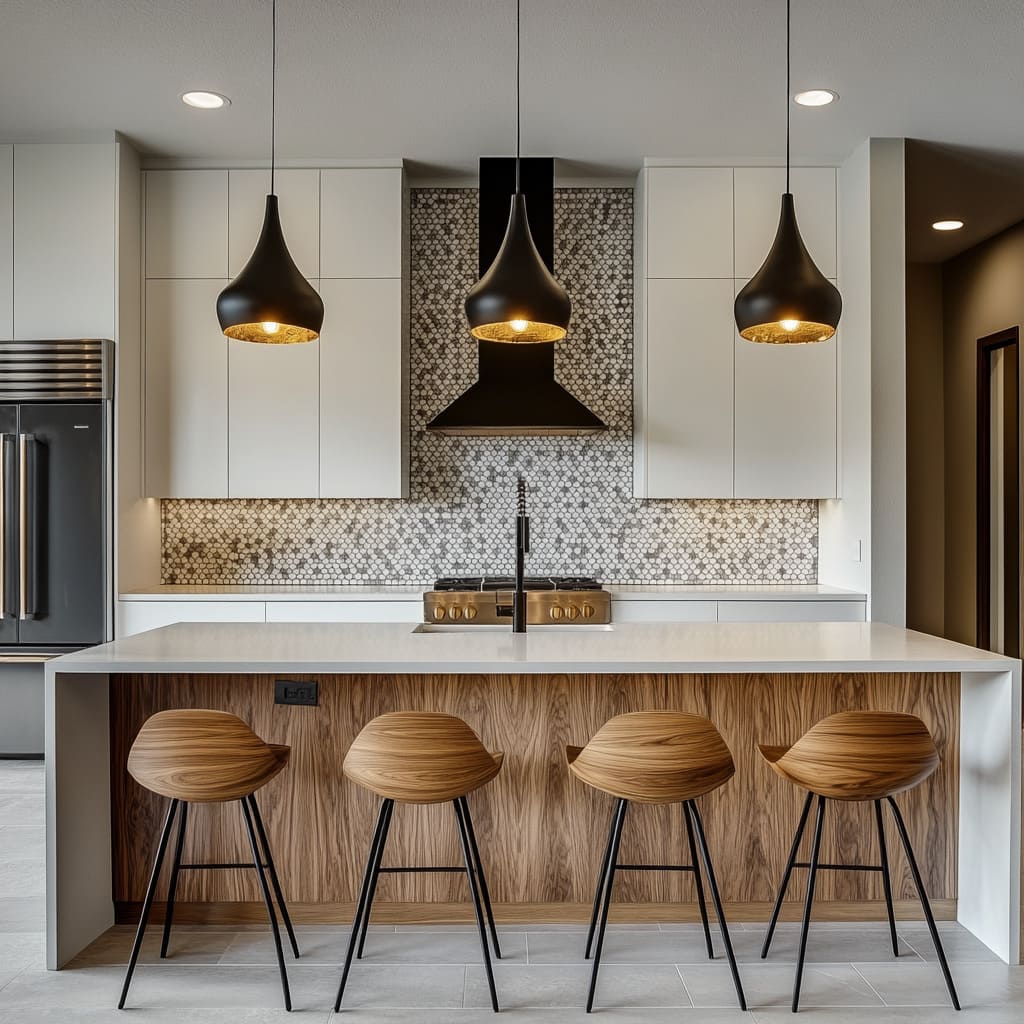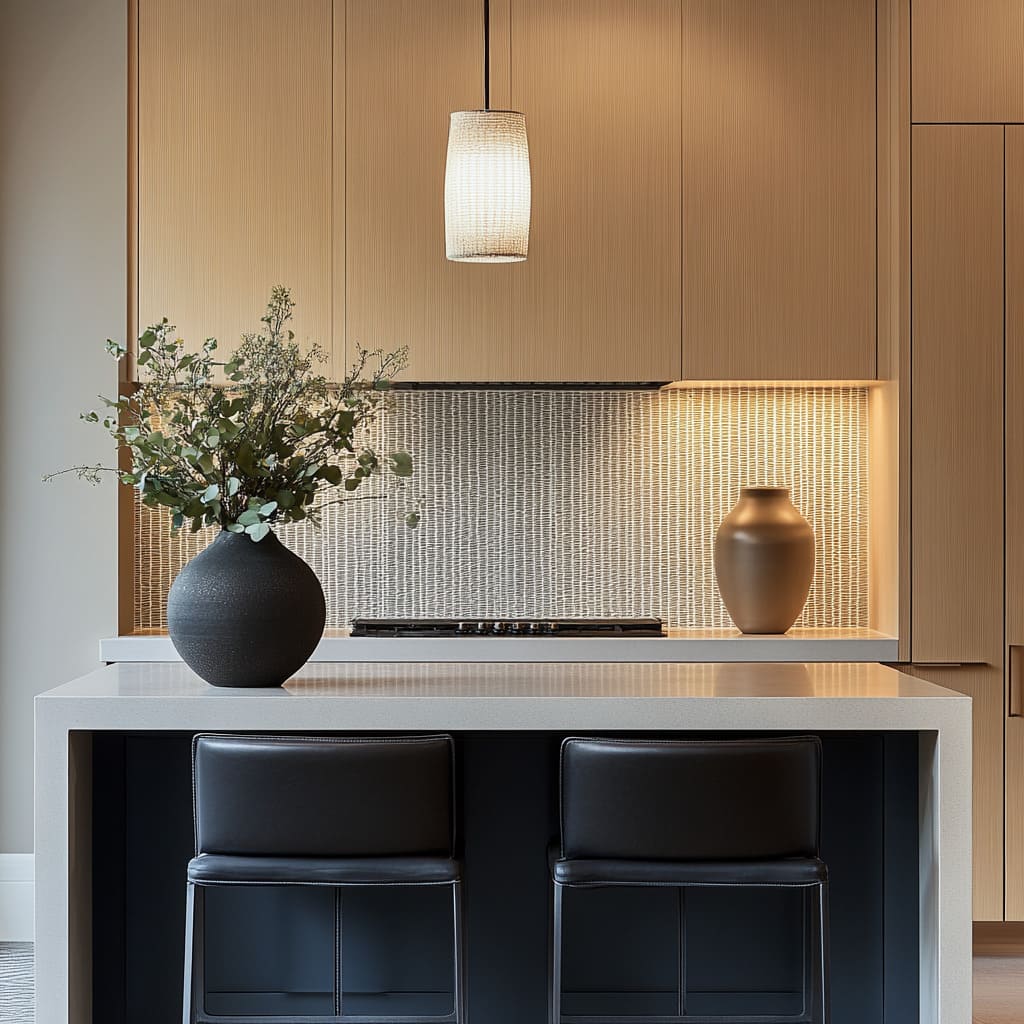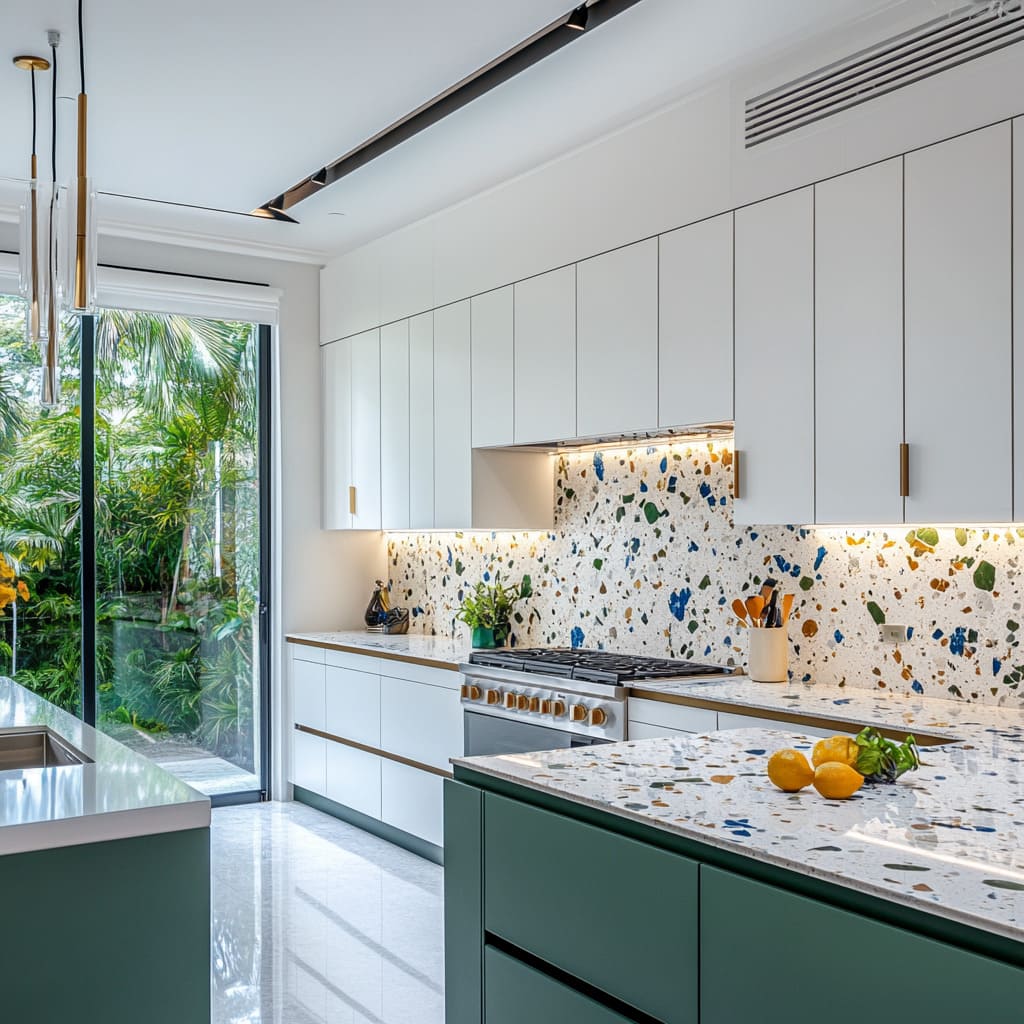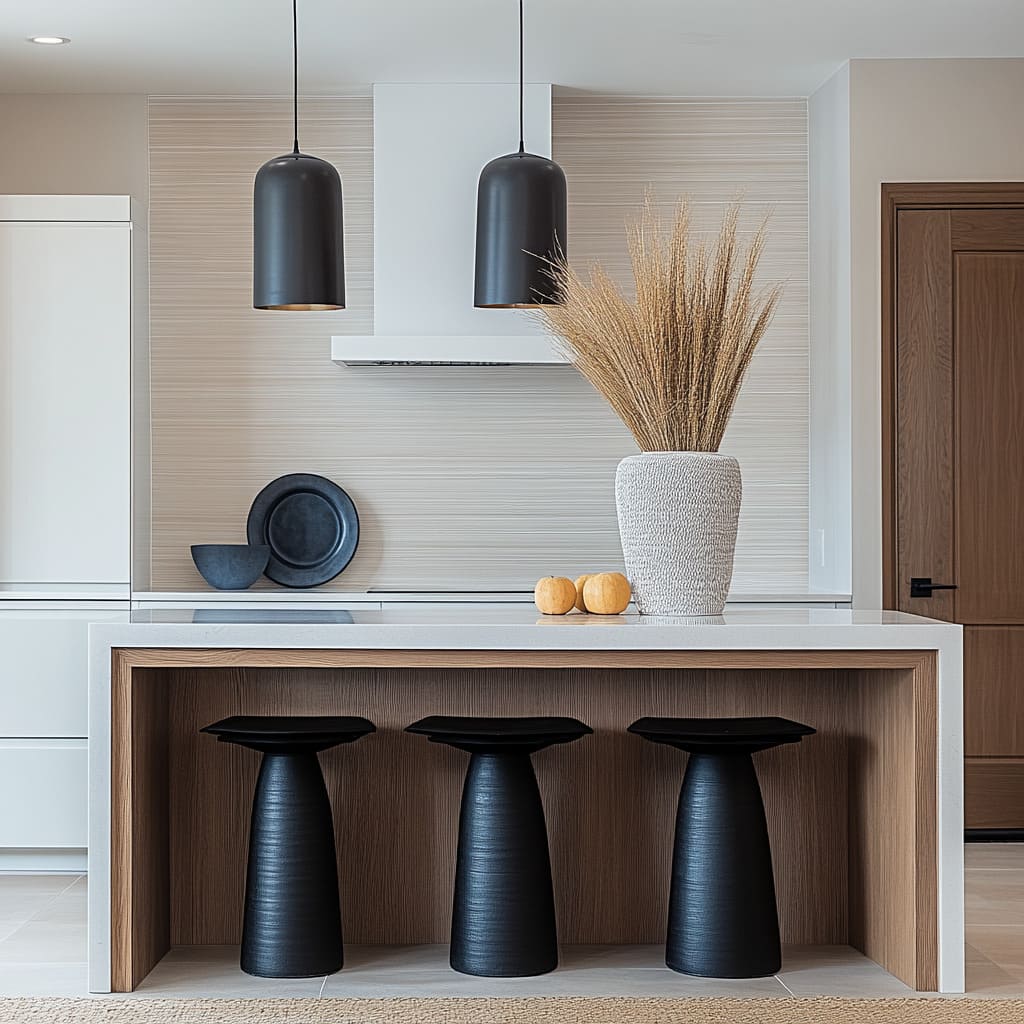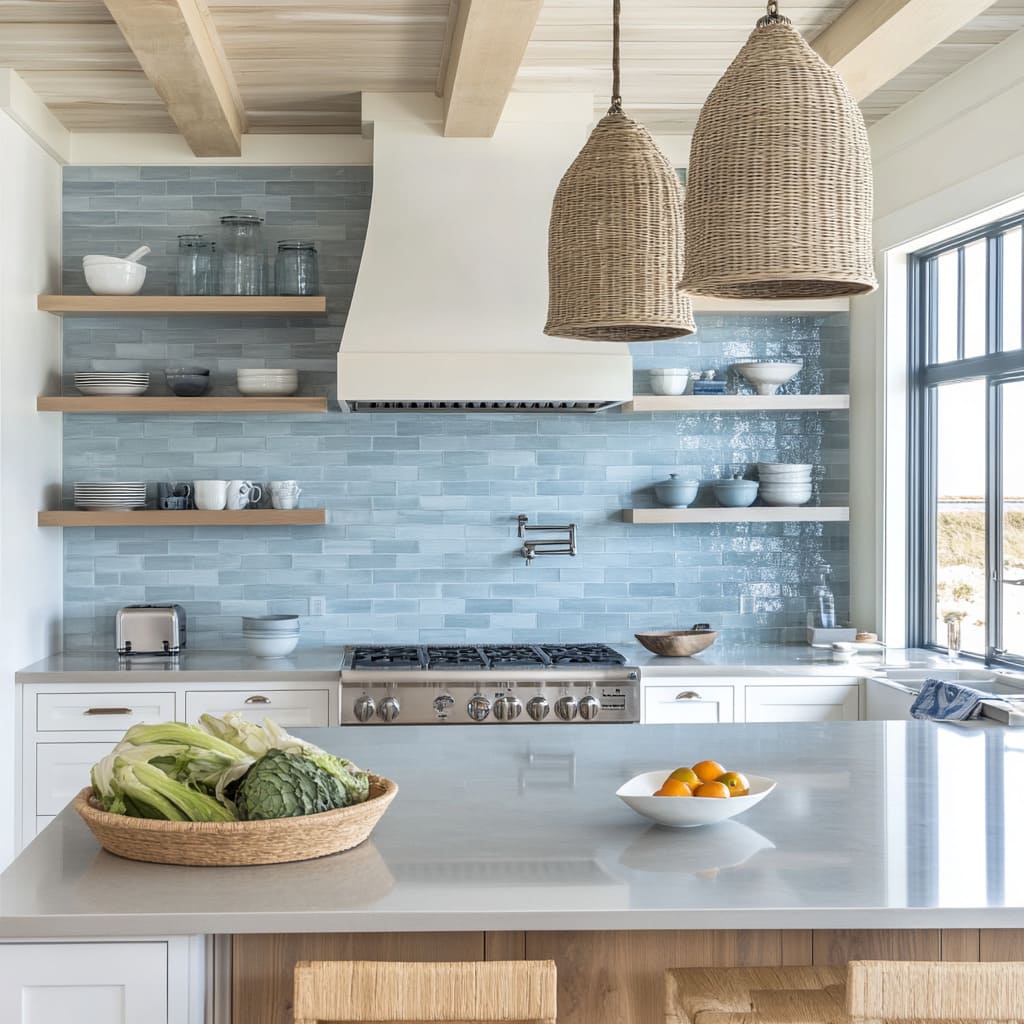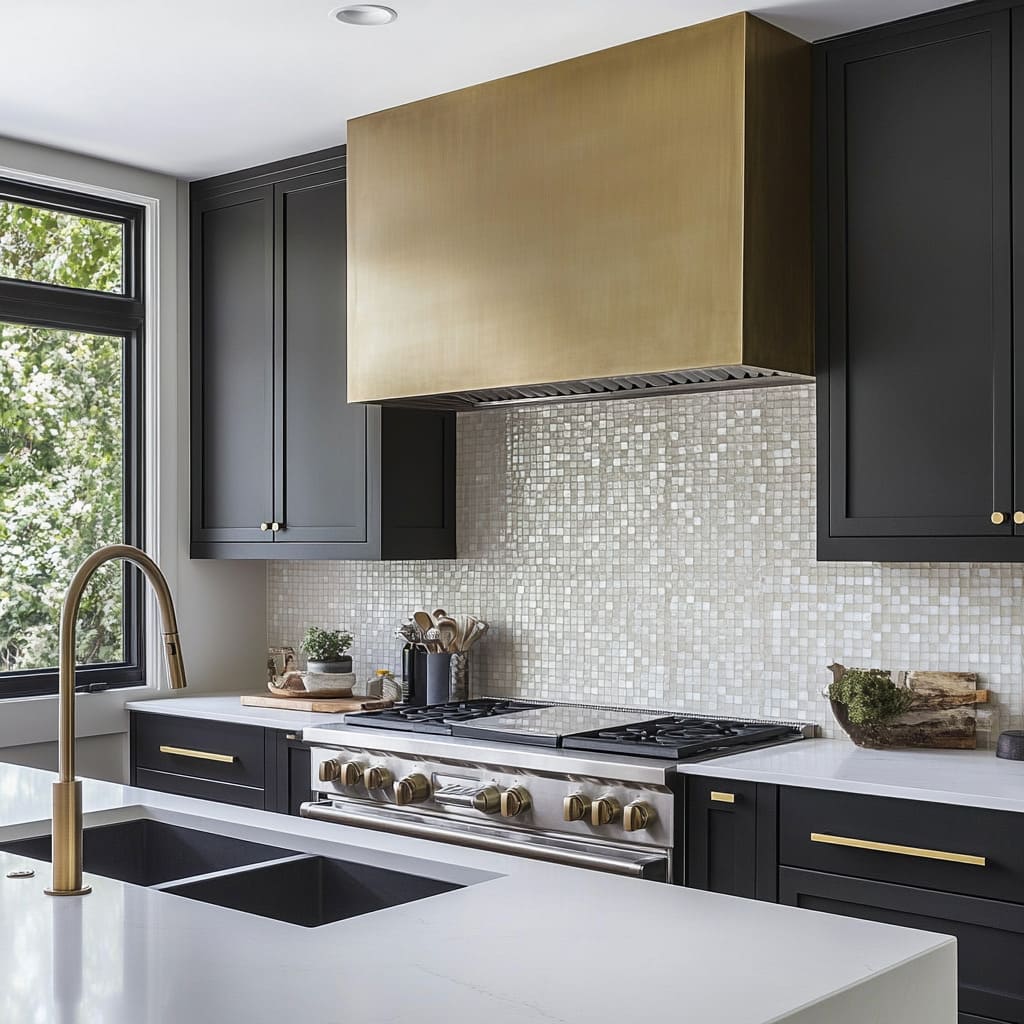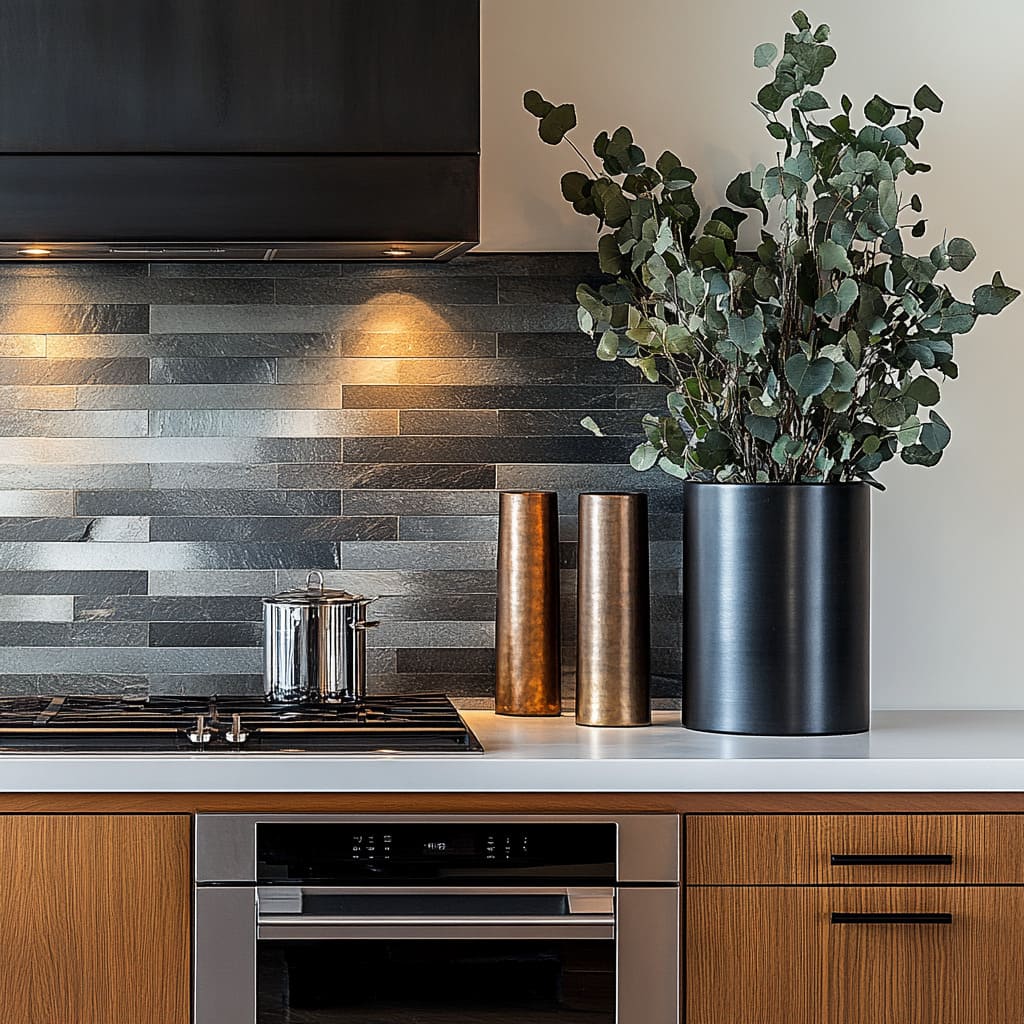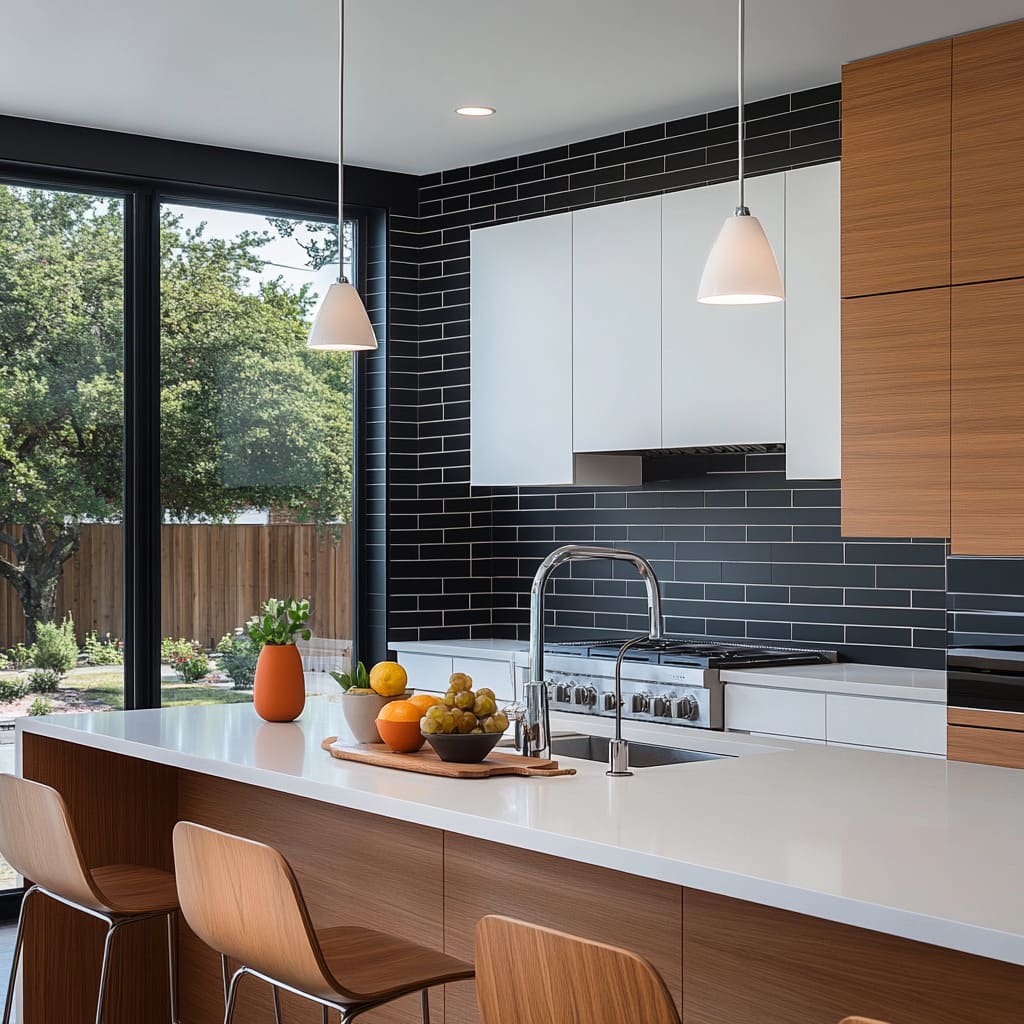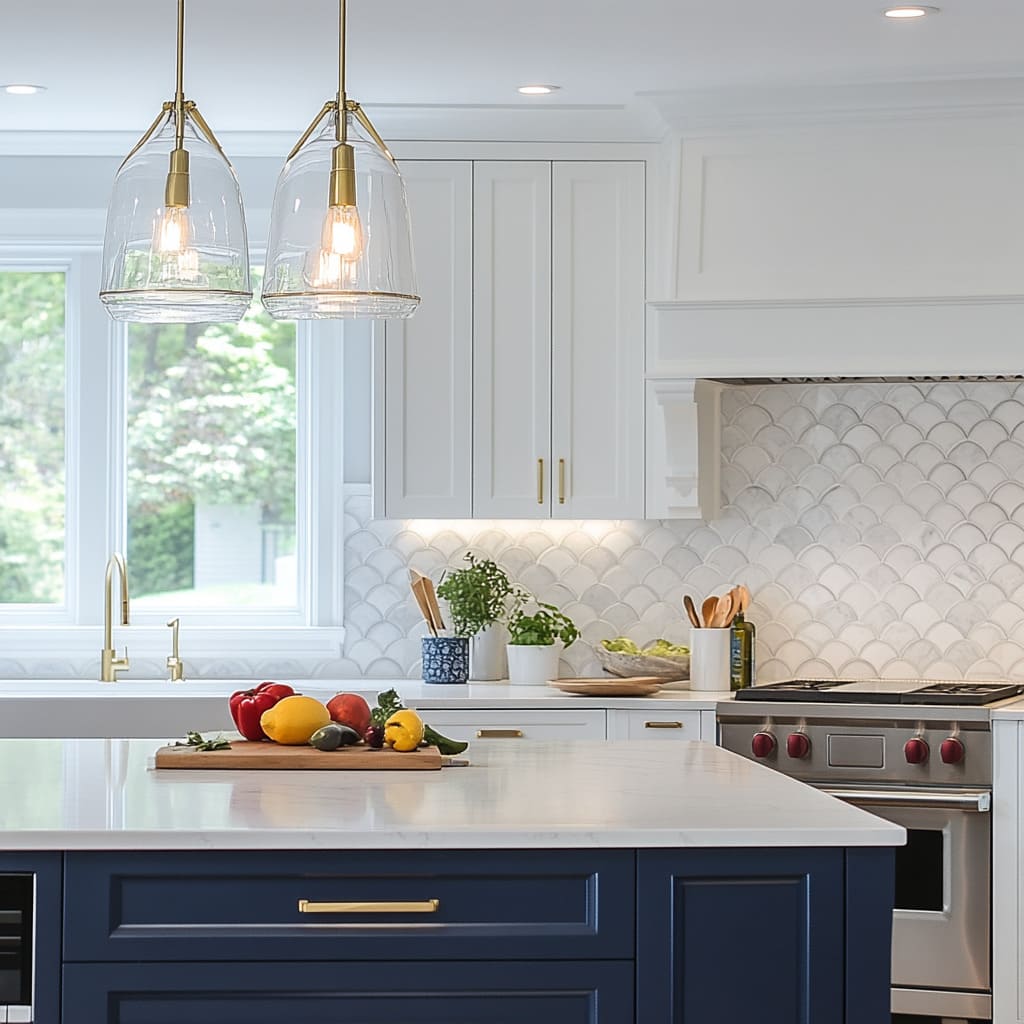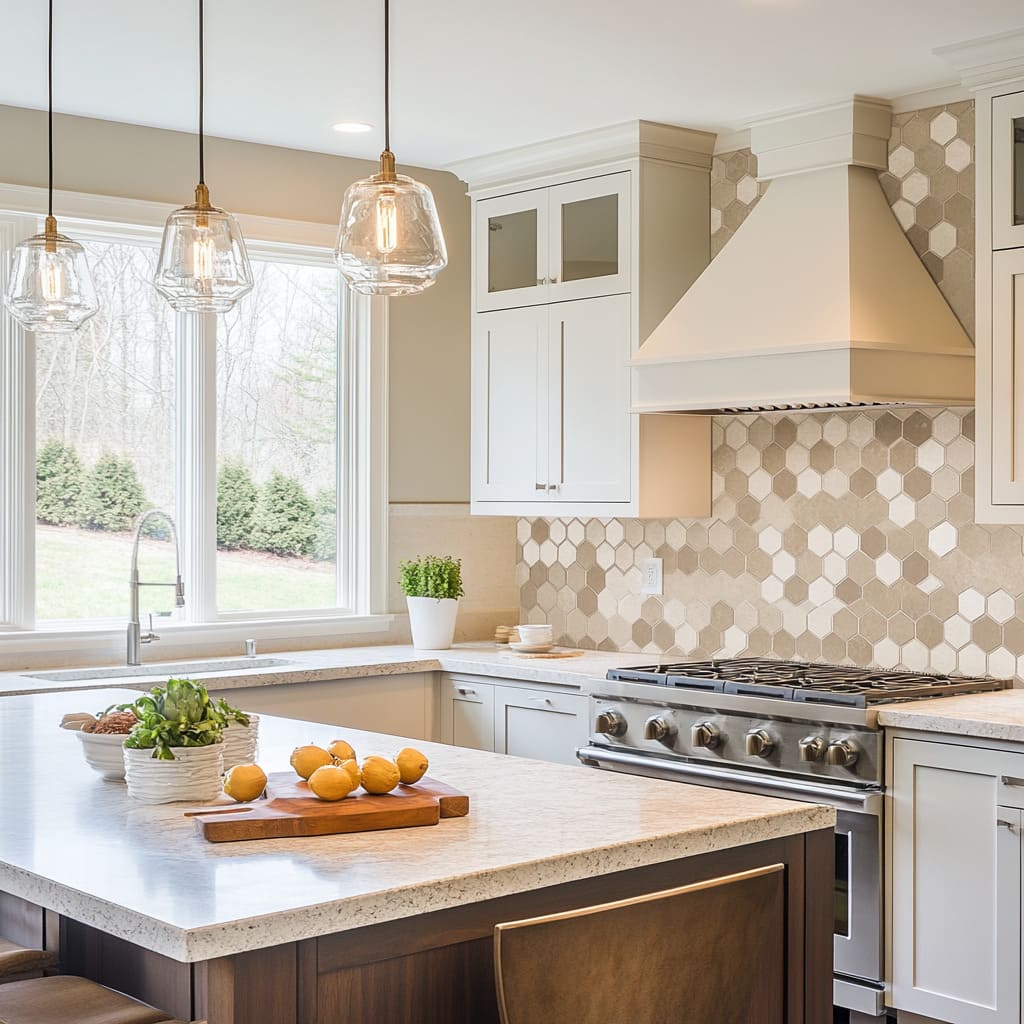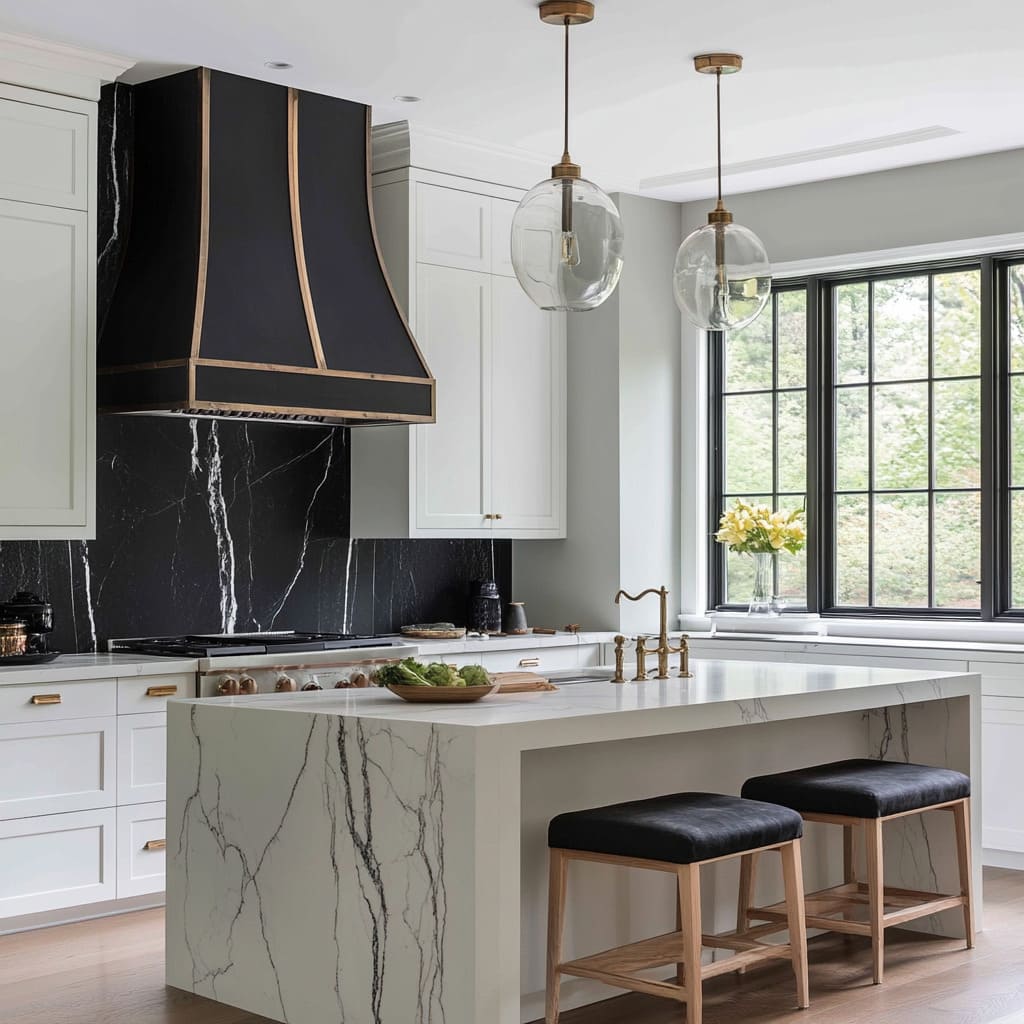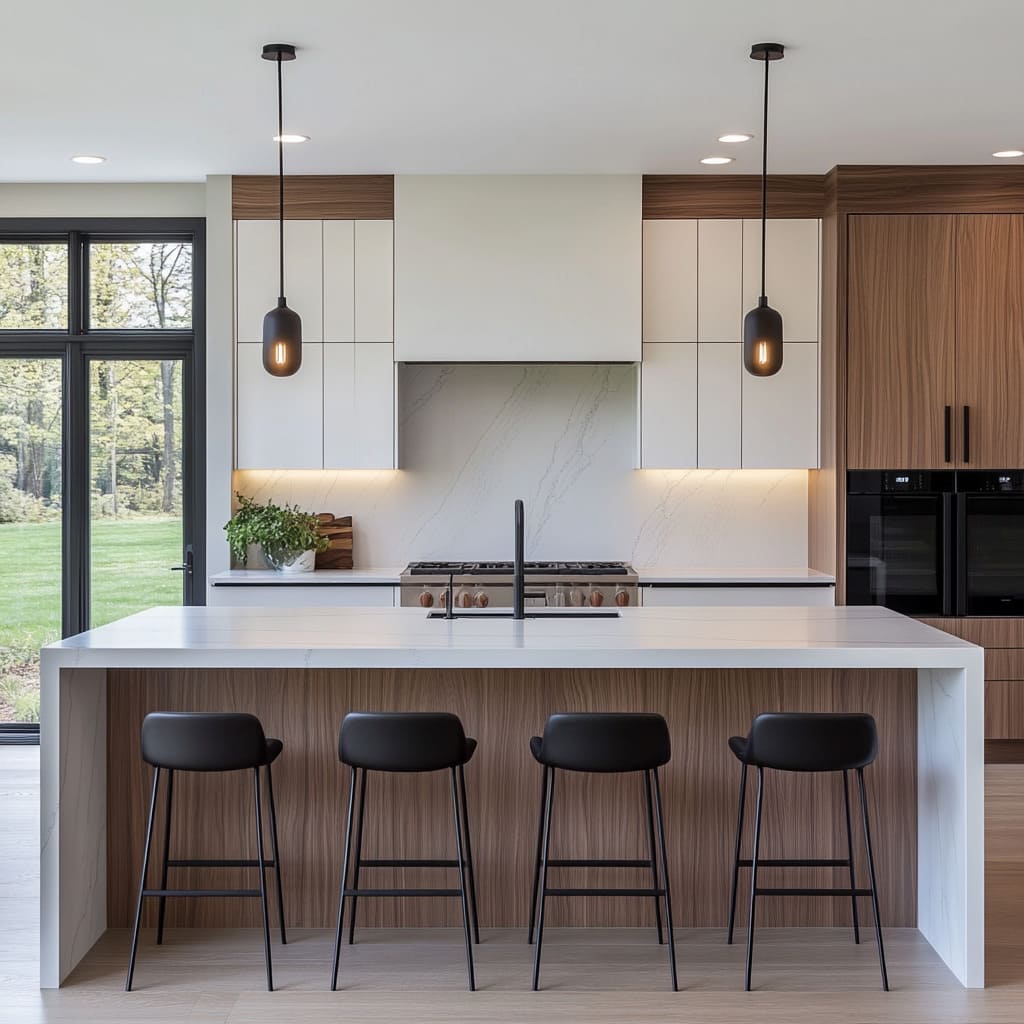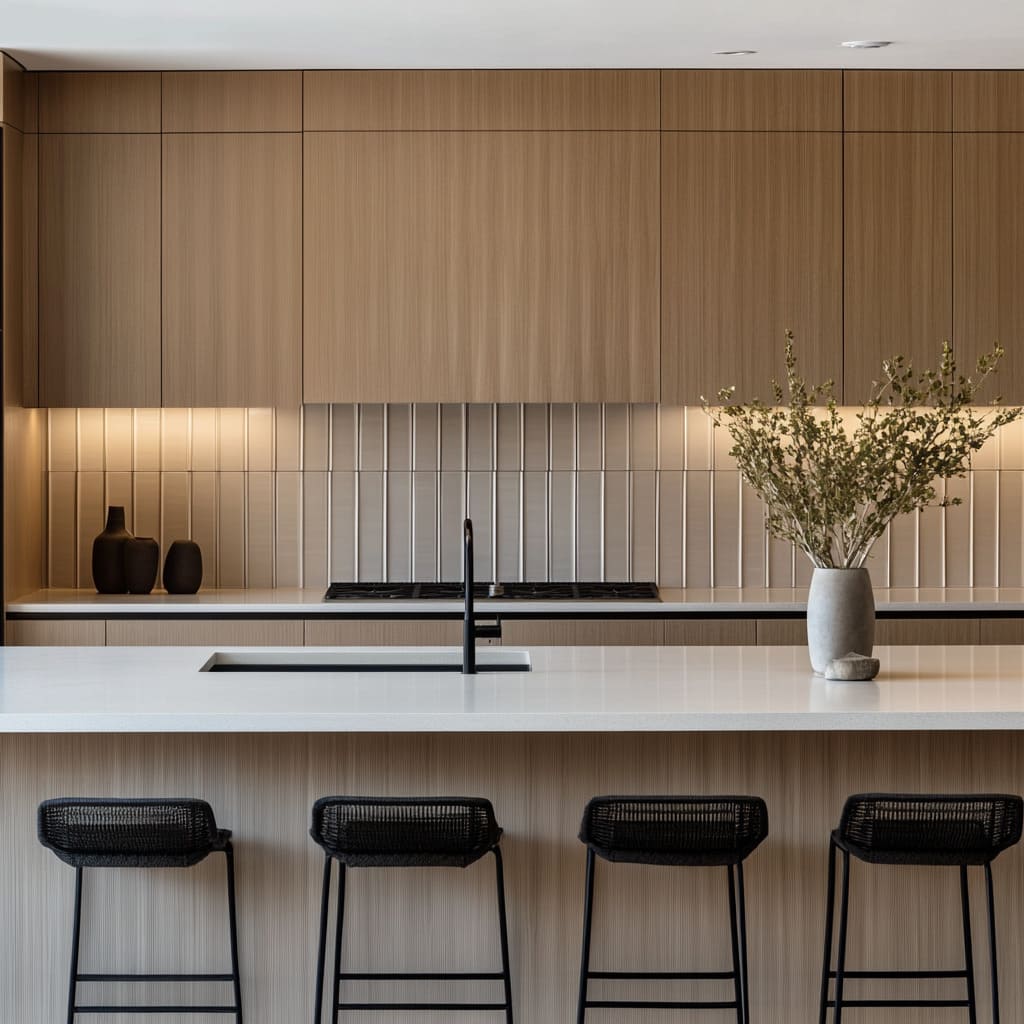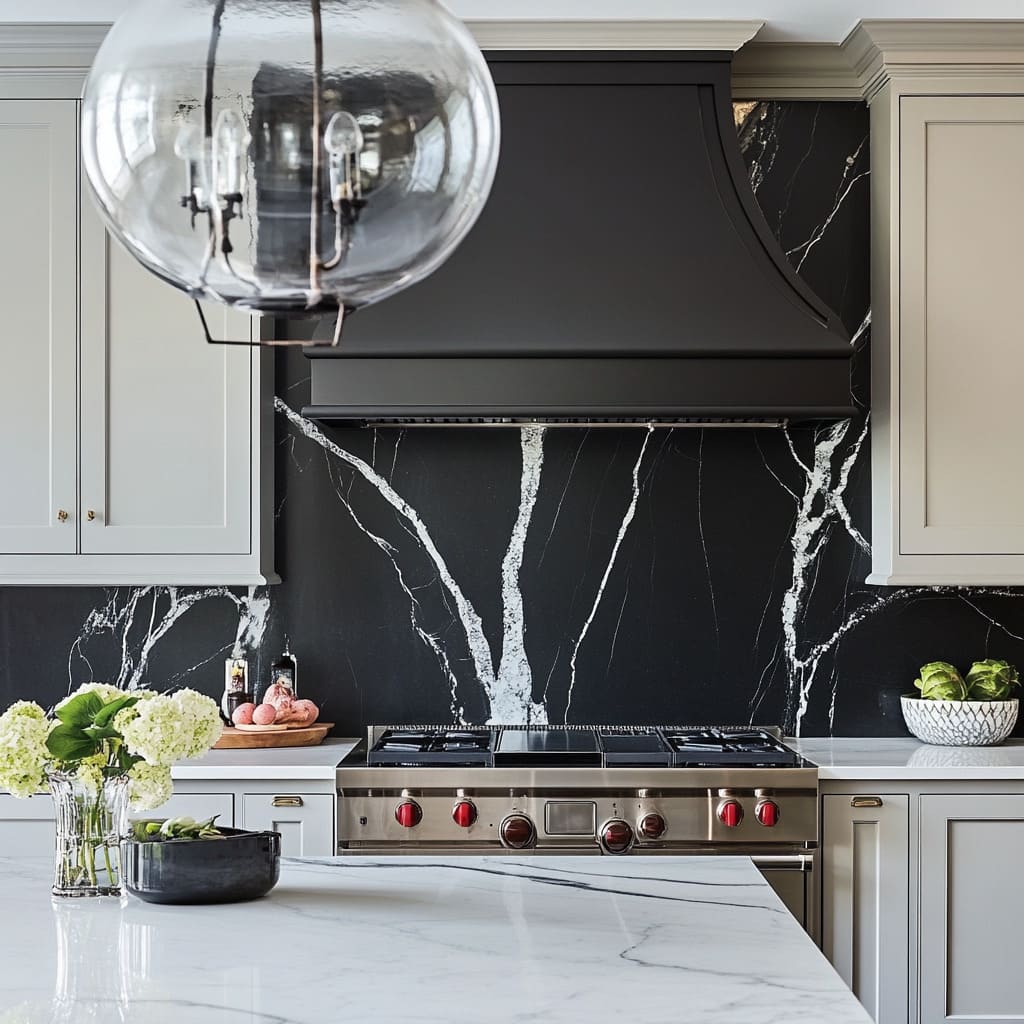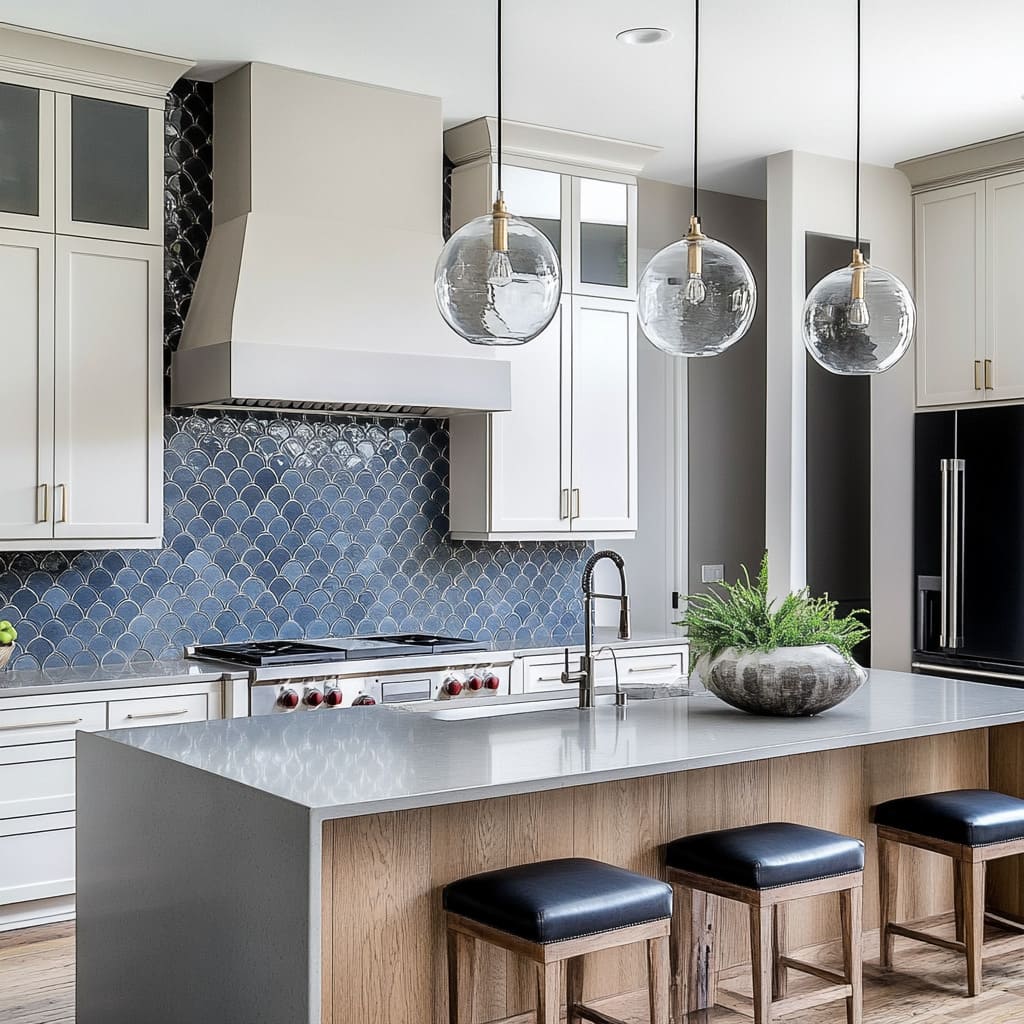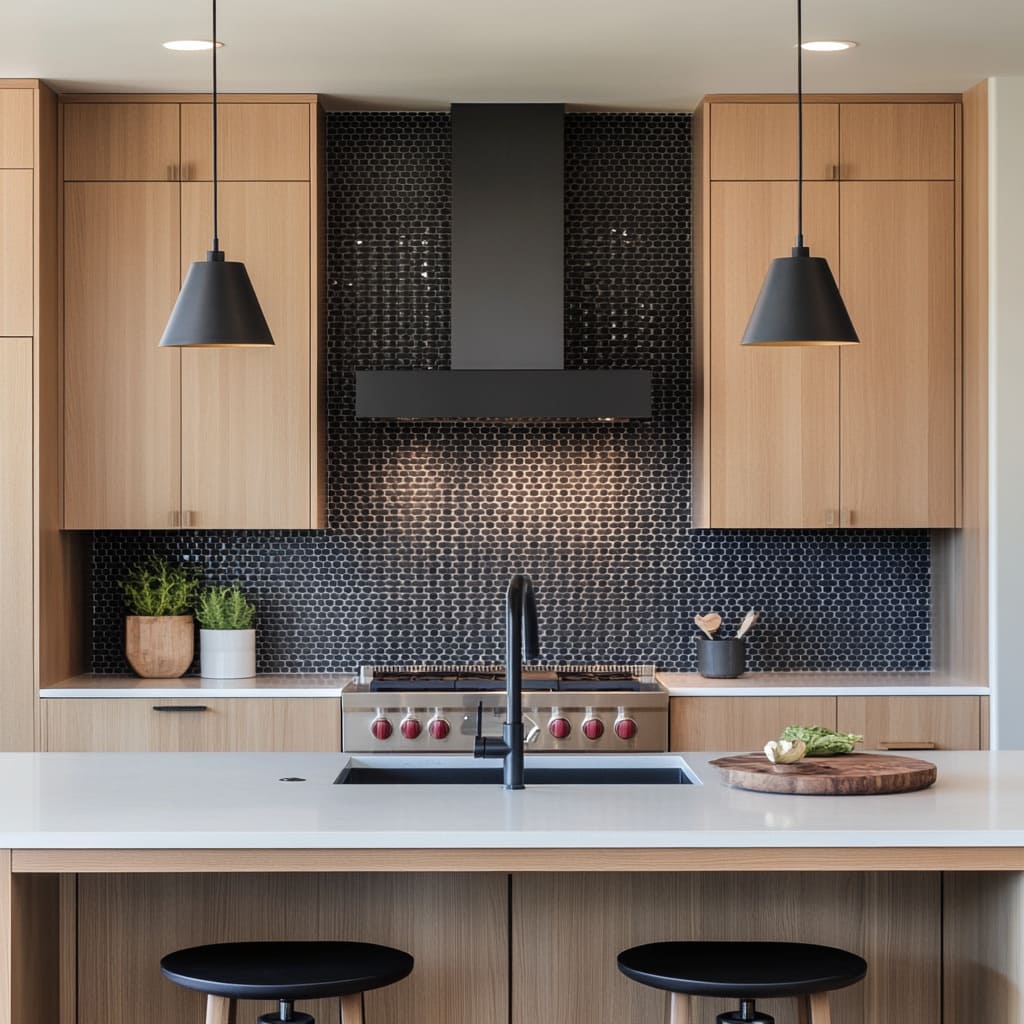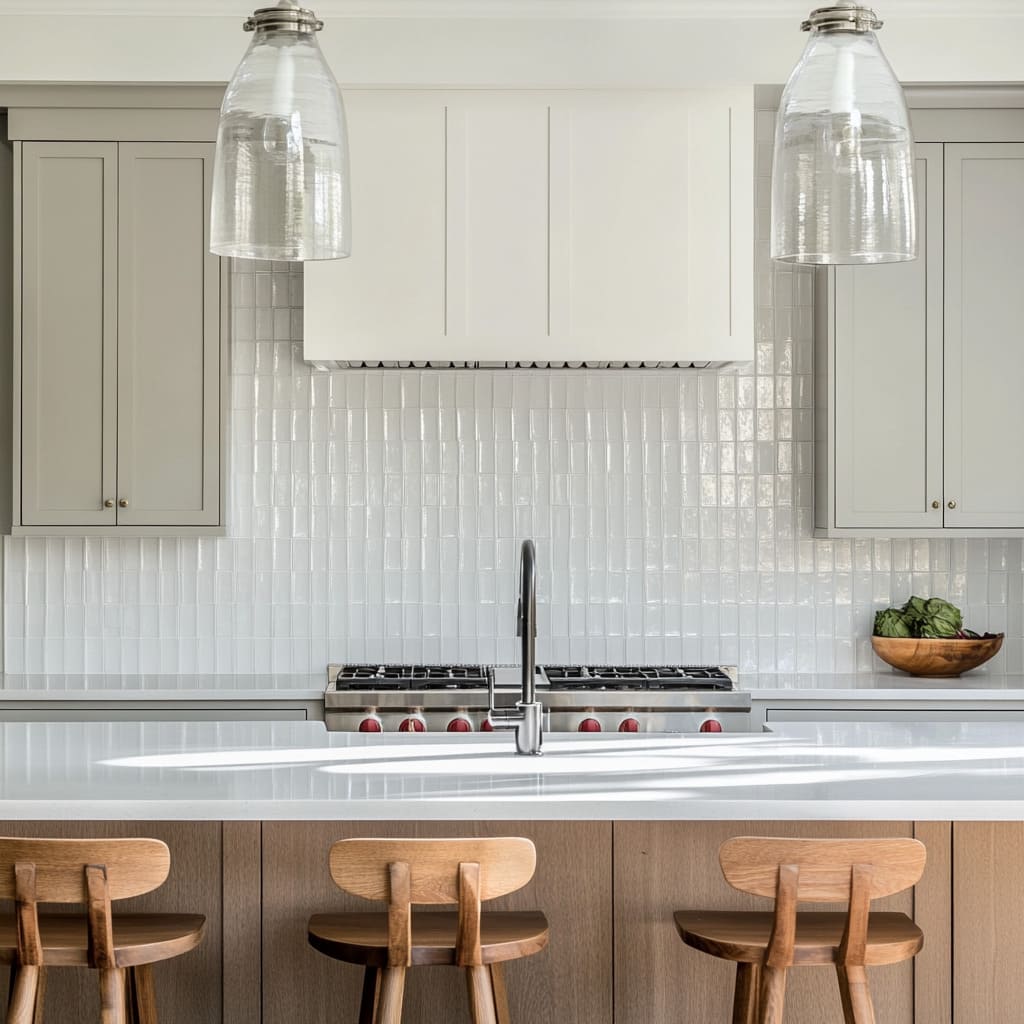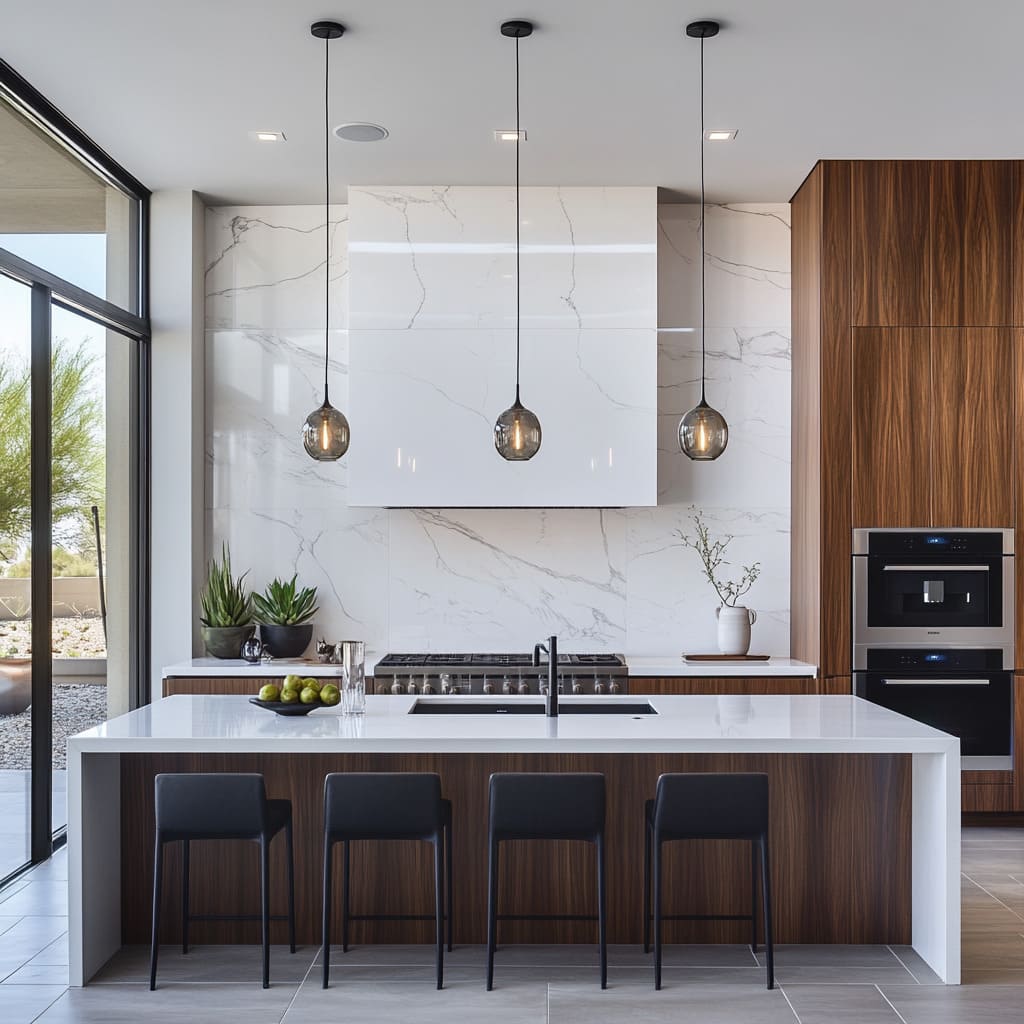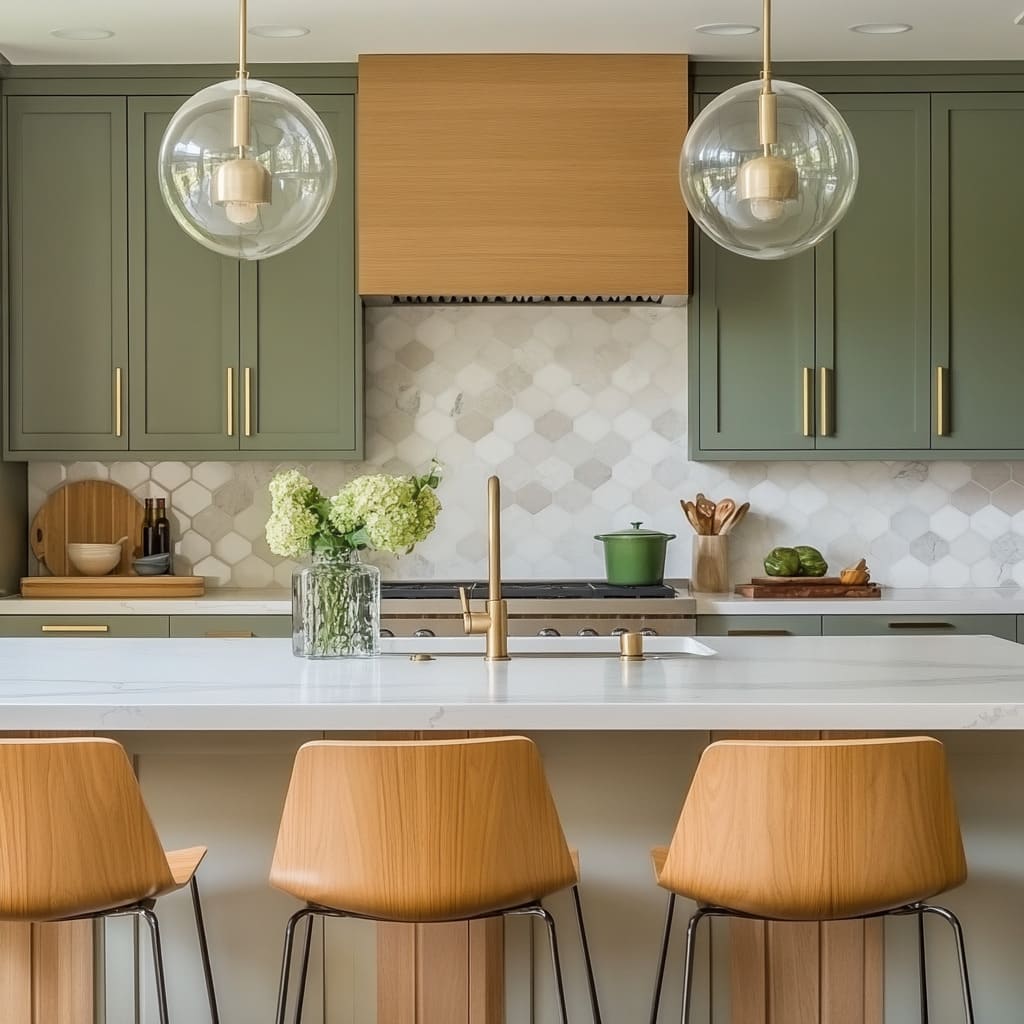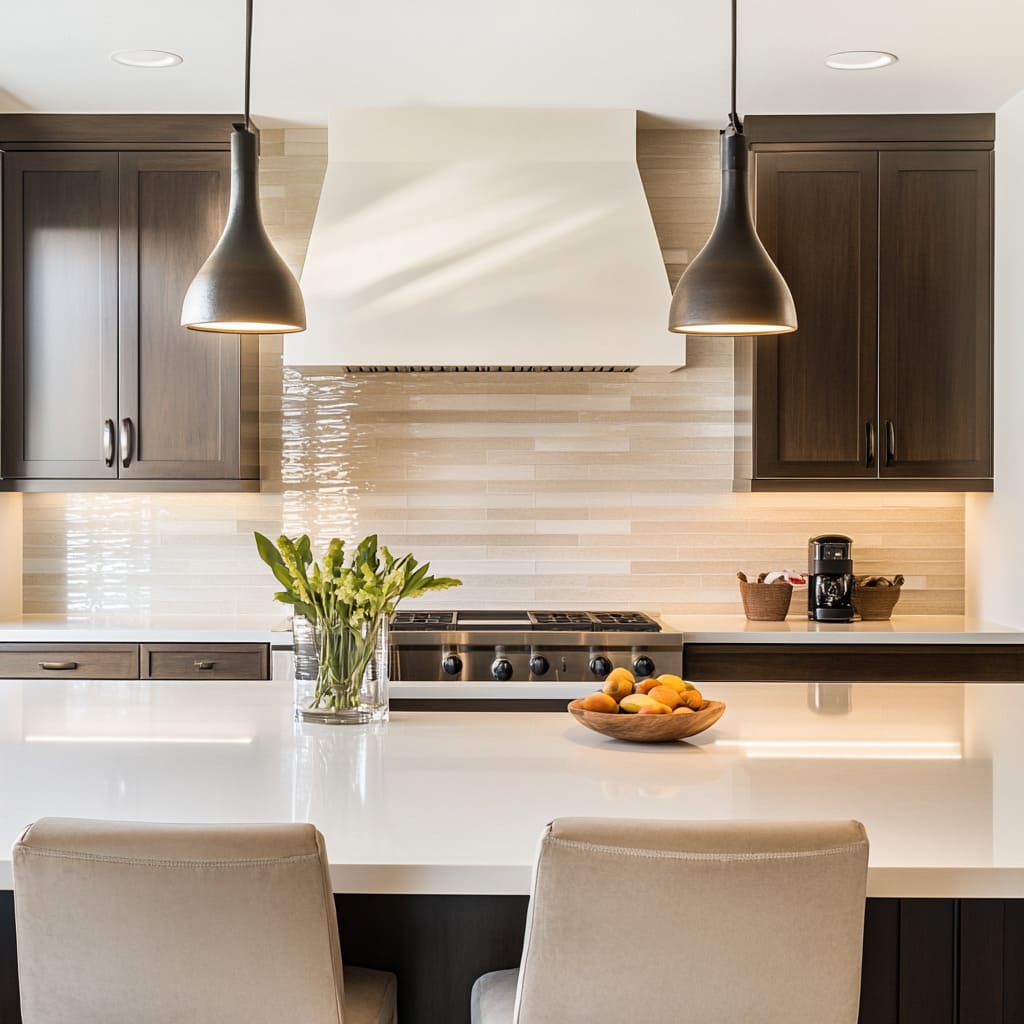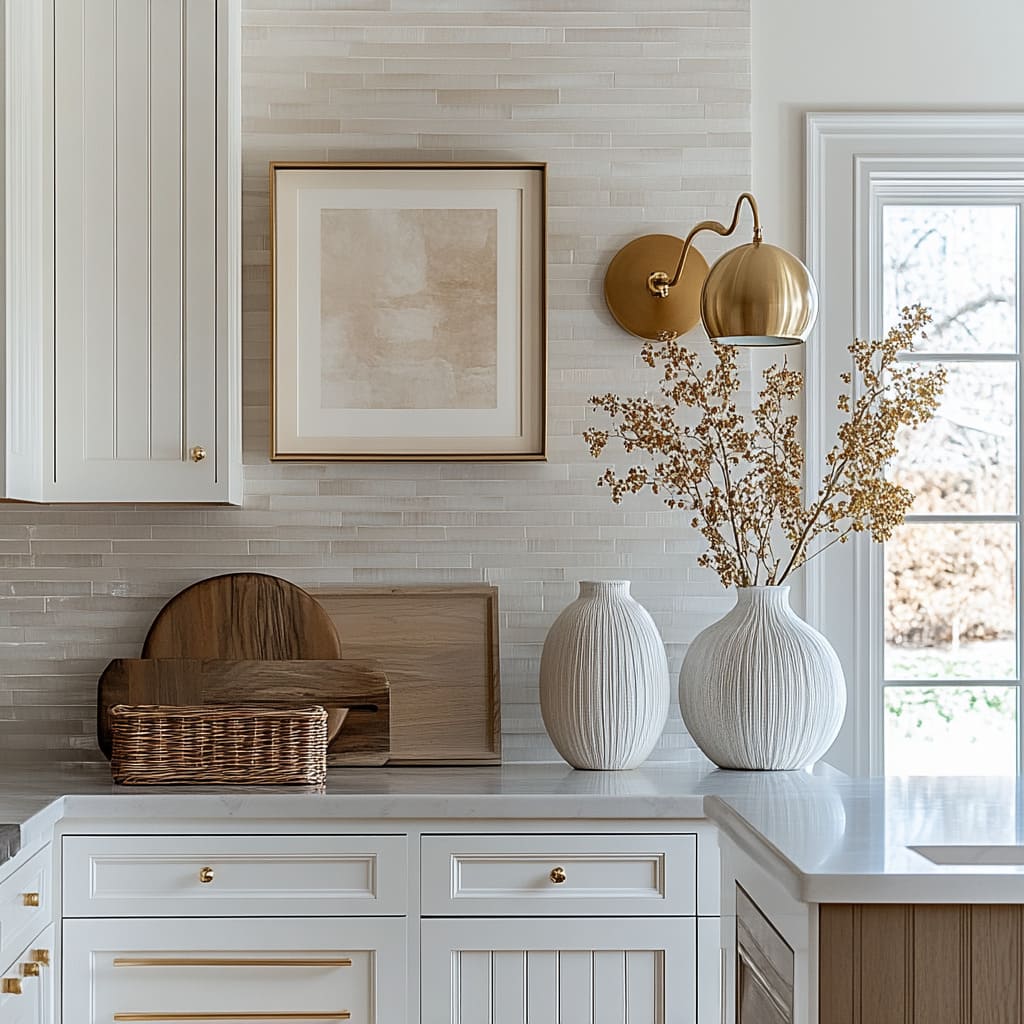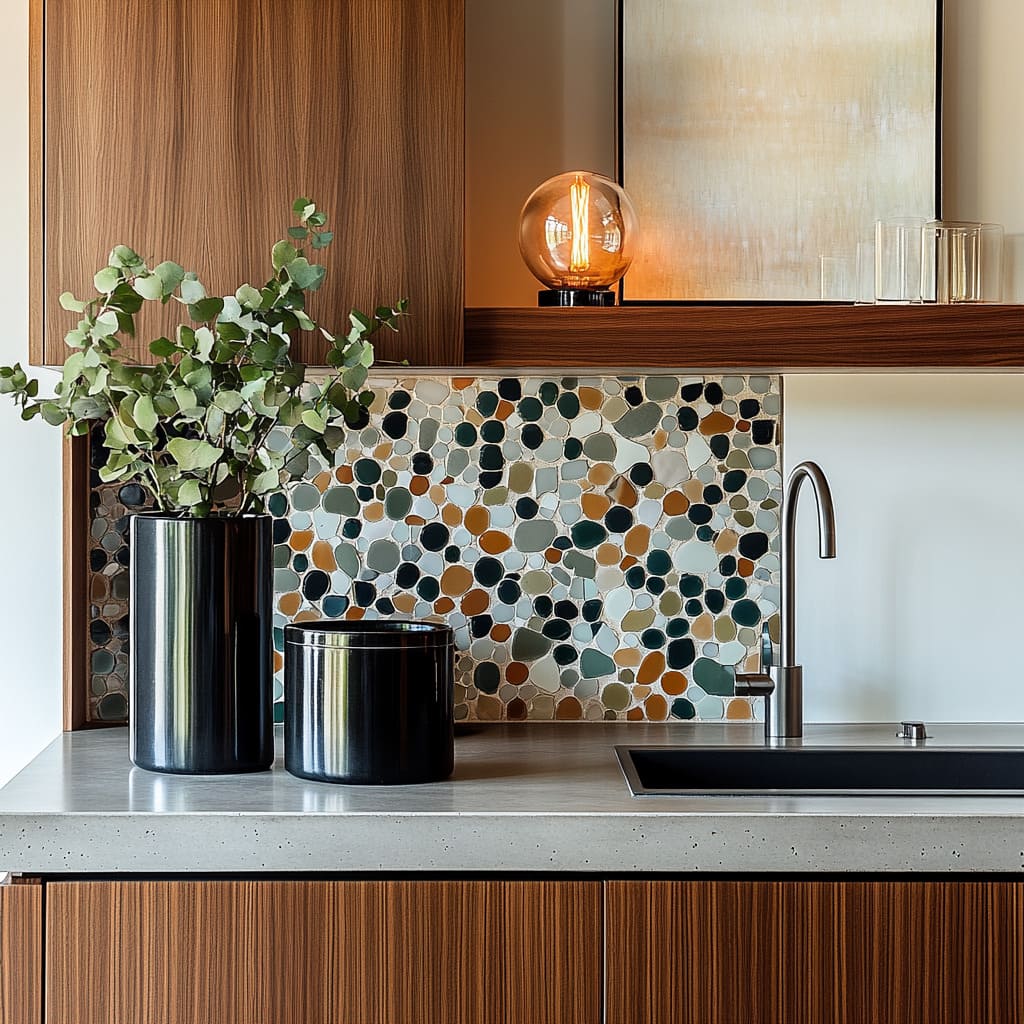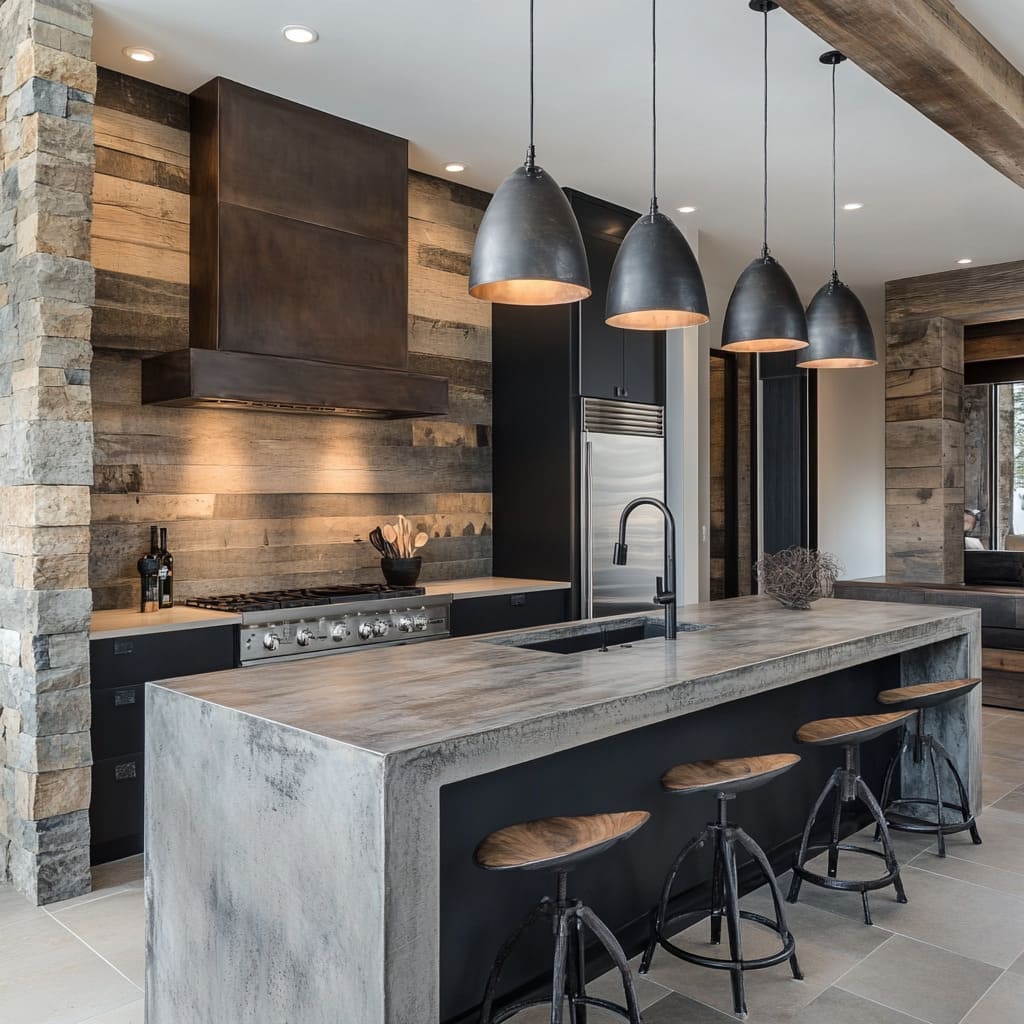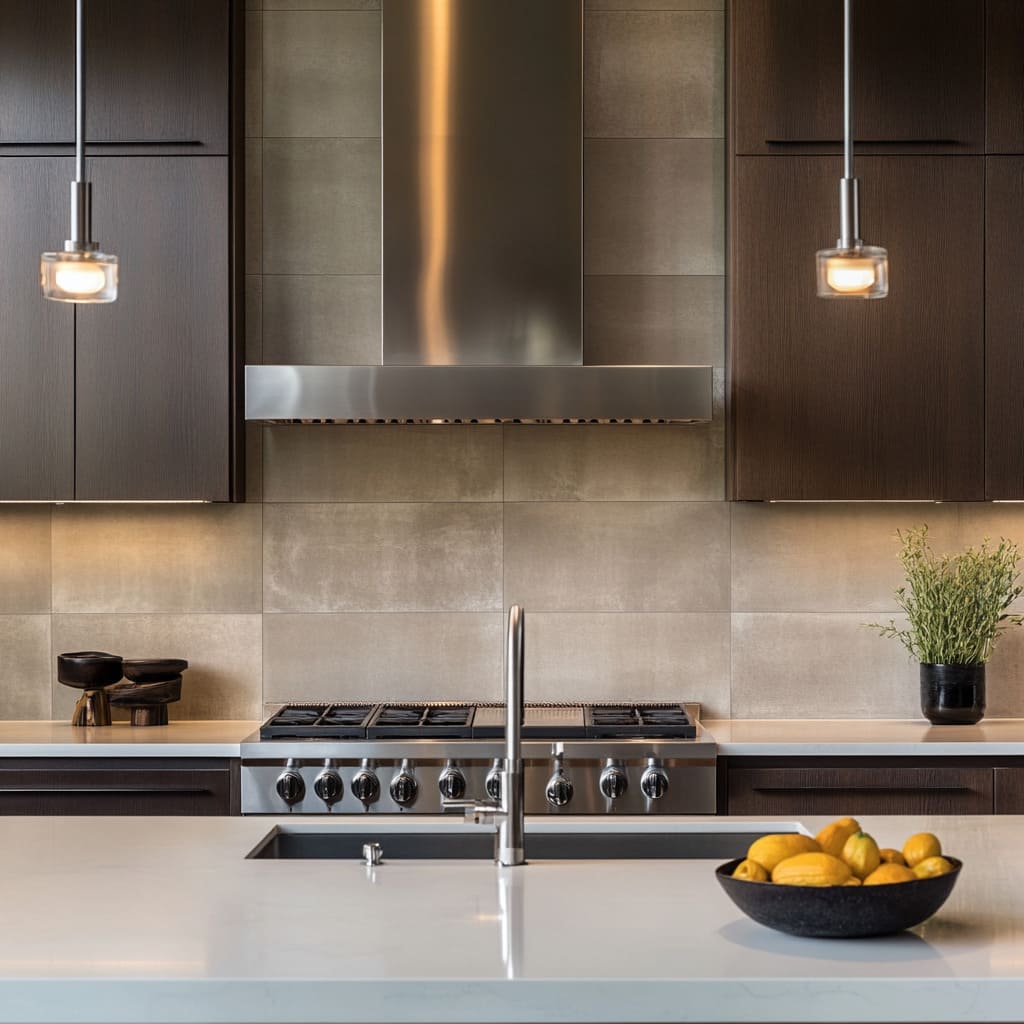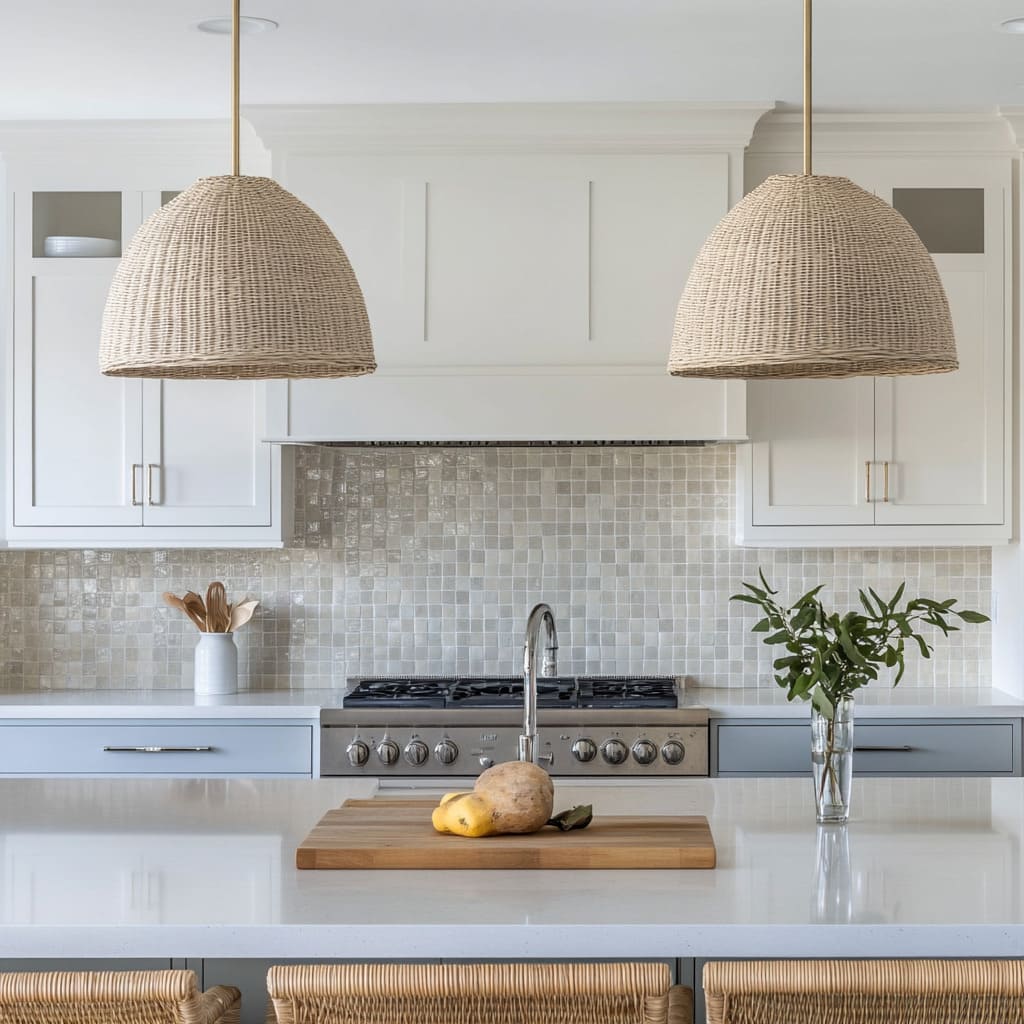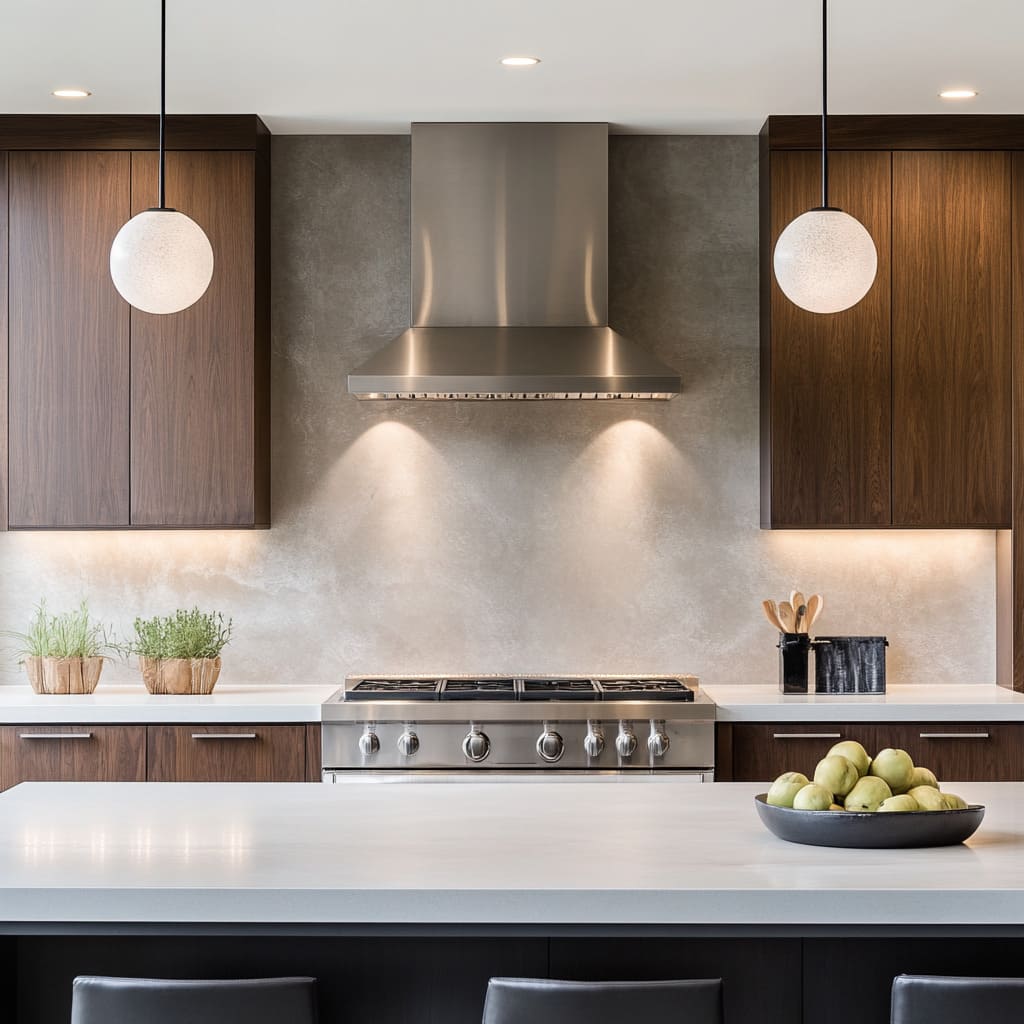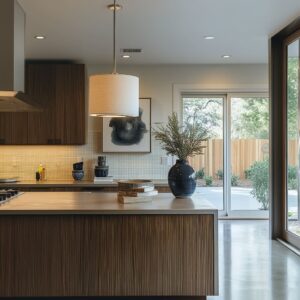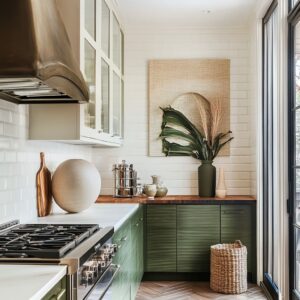The kitchen backsplash is often seen as a functional necessity, but it’s also a chance to infuse your cooking space with personality, texture, and style. Whether you’re designing a cozy family kitchen or a sleek, modern layout, the right backsplash does more than protect your walls—it can completely transform the feel of the room.
From materials and patterns to lighting and finishes, there’s no shortage of backsplash ideas to explore. Each choice, whether subtle or bold, brings its own charm and functionality, shaping how your kitchen looks and performs in daily life.
In this article, we’ll dive into a variety of approaches, highlighting practical tips and creative inspirations to help you craft a space that’s both beautiful and hardworking. No matter your style—classic, rustic, industrial, or artistic—your backsplash is the perfect canvas for blending function with flair.
Let’s uncover how to make it a standout feature in your kitchen while ensuring it remains practical and timeless.
Textural Dynamics and Light Interplay
Subtle Variations in Tile Finish
One of the most engaging ways to add character to a backsplash is through mixed finishes. Take the example from Image 1, where horizontal slate-inspired tiles alternate between polished and slightly matte textures.
This combination introduces depth and dimension, especially under focused lighting, such as under-cabinet LED strips or range hood lights. Each finish interacts differently with illumination—some areas catch the light for a soft glow, while others absorb it, creating a muted effect.
Takeaway:
For anyone seeking standout kitchen backsplash ideas without venturing into overly bold designs, mixed-finish tiles strike the perfect balance. From a distance, the surface appears understated, but up close, it reveals a sophisticated interplay of textures that feels modern yet timeless.
Pearlescent or Iridescent Mosaics
Tiny shimmering mosaic tiles offer both practicality and aesthetic charm. Their ability to scatter light irregularly disguises small splatters from daily cooking, making them a functional choice.
At the same time, the shimmer adds a sense of motion to the backsplash, especially when lit by bright overhead fixtures or under-cabinet lights. This type of design is particularly well-suited to kitchens that rely more on artificial light, as the reflective surfaces amplify brightness across the space.
Takeaway:
Iridescent mosaics provide a twofold advantage: they brighten kitchens that lack abundant natural light and offer a practical surface for easy upkeep. Their luminous effect works especially well in compact spaces, where every ounce of light adds to the room’s atmosphere.
Continuous Slab vs. Tiled Surfaces
A full slab backsplash delivers a cohesive and refined look that few tiled options can match. Large marble or stone slabs create the illusion of an expansive wall, free of interruptions from grout lines.
This approach allows the natural veining of marble—or the clean simplicity of engineered stone—to take center stage. Bold veining can act as a visual centerpiece, while subtler patterns lend a more restrained feel.
However, slab backsplashes require thoughtful planning, particularly for seam placement, and might need regular maintenance, especially when using porous materials like marble.
Takeaway:
A full slab design offers a high-impact aesthetic and minimal cleaning effort due to the lack of grout lines. However, kitchens with heavy cooking involving acidic ingredients should consider durable alternatives or proper sealants to avoid long-term staining.
This style is an excellent option for creating a seamless, luxurious backdrop in both modern and transitional kitchens. By exploring these dynamic options—mixed finishes, shimmering mosaics, and seamless slabs—you can add layers of texture and light interplay to your kitchen, ensuring it becomes a welcoming and functional focal point of your home.
Geometry and Illusion of Scale
Vertical vs. Horizontal Orientations
Vertical Tile Placement
Using long, slim tiles or narrow ceramic strips in a vertical arrangement can dramatically transform how a kitchen feels. This design draws the eye upward, making ceilings seem taller and the room feel more open.
It’s particularly useful for kitchens with limited vertical space. By pairing vertical tiles with minimalist cabinetry, the look stays clean and avoids becoming visually overwhelming.
Takeaway:
Vertical layouts are perfect for compact kitchens, adding a sense of height without requiring structural changes. To keep the effect balanced, match the vertical lines with understated, streamlined kitchen designs.
Horizontal Emphasis
Horizontal tiles, on the other hand, emphasize the width of a space. Whether arranged in a classic staggered subway style or more linear formats, this approach creates a stable and grounded effect.
Darker horizontal kitchen backsplash designs can frame key cooking areas, offering contrast and visual structure against lighter walls or cabinetry. If the tiles have a glossy surface, they amplify light reflection, adding a sense of spaciousness.
Takeaway:
Kitchens that feel narrow or confined can benefit from a horizontal backsplash. The broader the tile layout, the more the room opens up visually, especially when combined with reflective finishes.
Hexagonal Patterns
Hexagonal tiles bring a modern geometric flair to kitchens, striking a balance between structured design and visual interest. Their versatility lies in their adaptability:
- Large Hexagons with bold color contrasts make a dramatic statement, drawing attention to the backsplash as a feature.
- Small Hexagonal Mosaics, by contrast, appear delicate from a distance but reveal intricate detail upon closer inspection.
Tile-to-grout contrast plays a critical role here. A low-contrast grout blends seamlessly with the tile color, creating a calm and unified appearance, while a high-contrast grout emphasizes each hexagon, making the pattern pop.
Takeaway:
Hexagons are a great alternative to conventional rectangular tiles, adding dimension and flexibility to your kitchen’s design. The level of boldness depends on your choice of size, color, and grout contrast.
Curved and Scalloped Shapes
Tiles with curved or scalloped edges, like fish-scale patterns, bring a softer, flowing rhythm to the space. These designs create movement and contrast beautifully with kitchens that have sharp lines—think square islands or linear cabinetry.
When finished with a glossy surface, each curve catches the light, giving a dynamic and lively appearance.
Takeaway:
Curved tiles work well for kitchens with strong architectural elements, offering a gentle counterbalance to an otherwise structured layout. They’re an excellent choice for adding personality without overwhelming the space.
By playing with tile orientation, shape, and finish, these creative geometry-inspired layouts can transform your backsplash into a focal point, while also altering how the space feels overall.
Color Psychology and Coordination
Dark and Bold
High Contrast
Dark backsplashes, whether deep blacks, charcoals, or rich marbles, act as a dramatic anchor in any kitchen. When combined with light cabinetry, they create a striking contrast that highlights metallic features, such as brass accents or stainless-steel appliances.
This pairing naturally draws the eye to key elements of the design, making the kitchen feel grounded and cohesive.
Maintenance Considerations
Dark, glossy finishes are stunning but can reveal imperfections like water spots or grease splashes more readily. For a more forgiving alternative, matte surfaces can help minimize the visibility of fingerprints and smudges, making upkeep more manageable.
Takeaway:
A dark backsplash works beautifully to showcase contrasting metallic elements or light cabinetry. However, proper task lighting is essential to avoid the space feeling too dim or shadowed.
Light Neutrals
Reflective Quality
Pale backsplashes, especially those with a glossy or semi-reflective finish, have the advantage of brightening up kitchens by bouncing light around the room. This effect is particularly beneficial in smaller spaces, where enhancing the sense of openness is a priority.
To keep the look from feeling overly plain, subtle textures or faint patterns—like striations or gentle veining—add depth without overwhelming the design.
Warm vs. Cool Undertones
When choosing light neutrals, the undertones matter. Creams and beiges infuse a sense of warmth and are well-suited for traditional or rustic kitchens.
On the other hand, stark whites or cool off-whites lean toward a more modern aesthetic, often complementing sleek cabinetry and minimalist layouts.
Takeaway:
Neutral backsplashes are versatile and work well in open-concept homes, where they can blend seamlessly with adjoining spaces. Adding texture or a slight pattern prevents the design from feeling clinical or overly sterile.
Colorful or Artistic Options
Pebble-Inspired Tiles
For those who love organic and earthy aesthetics, pebble-inspired tiles offer a unique approach. Their irregular edges and varied tones create a natural feel, while the multicolored palette can subtly tie in surrounding wood tones or decor accents.
Soft Blue Shades
Soft blues bring a soothing touch, often associated with coastal or airy kitchen styles. A glossy finish on blue tiles enhances brightness, making them a wonderful option for kitchens with limited natural light.
This shade works exceptionally well in spaces inspired by breezy, casual designs.
Terrazzo
Terrazzo backsplashes, especially those with oversized chips, bring a playful, artistic quality to a kitchen. Their bold mix of colors and textures adds visual interest, making them a strong focal point.
Pairing terrazzo with simple cabinetry or minimalist hardware ensures the space feels balanced and avoids visual clutter.
Takeaway:
Choosing vibrant or heavily patterned designs like terrazzo or colorful mosaics can establish a kitchen’s overall vibe. To keep the look harmonious, opt for subdued cabinetry or streamlined hardware that complements rather than competes.
By experimenting with colors and finishes, from the bold contrasts of dark tiles to the gentle warmth of neutrals or the playful energy of terrazzo, your backsplash becomes more than just a functional element—it sets the tone for your kitchen. Whether you’re looking for inspiration for back splash for kitchen ideas or a way to inject personality, these options offer endless opportunities to design a space that feels truly yours.
Natural Elements and Textured Surfaces
Wood or Wood-Like Materials
Adding reclaimed or distressed wood to your kitchen backsplash creates a warm, inviting aesthetic. The texture and character of natural wood bring depth and individuality to the space, whether you’re designing an industrial-themed kitchen with metal fixtures or leaning into a cozy farmhouse style.
- Unique Grain and Patina: Every wood plank tells its own story, showcasing individual knots, grain patterns, and weathered marks. These natural imperfections are what make wood an appealing choice for kitchens where character matters.
- Protective Finishes: To maintain the beauty of wood backsplashes, particularly in areas prone to splashes, protective sealants or even glass overlays are essential. These additions prevent stains and make cleaning much easier while preserving the organic texture.
Takeaway:
Wood-based backsplashes deliver warmth and rustic charm, though they may require slightly more care. They pair beautifully with black metal fixtures, creating a balanced look that combines ruggedness with sophistication.
Concrete-Like Finishes
A concrete-inspired backsplash offers a contemporary, industrial vibe with a raw, understated elegance. These matte surfaces mimic the texture of raw concrete or plaster, providing a perfect neutral backdrop for various kitchen styles.
- Modern Industrial Edge: Neutral gray tones complement a wide range of cabinetry finishes, from rich wood tones to minimalist white. This versatility makes concrete an ideal choice for achieving a sleek, modern look.
- Subtle Imperfections: The slightly uneven texture or natural-looking color variations help camouflage small marks or dust, making these surfaces as practical as they are stylish.
Takeaway:
Concrete-like finishes are a great way to introduce industrial influences without overwhelming the space. They typically require minimal upkeep, but if the material is porous, proper sealing will ensure long-term durability.
By incorporating natural elements like wood or opting for textured surfaces like concrete, you can transform your backsplash into a design statement. Whether your goal is to create a cozy, farmhouse-inspired space or a sleek industrial kitchen, blending these materials with thoughtful finishes opens up endless possibilities for kitchen and backsplash ideas that stand out while remaining functional and easy to maintain.
Harmonizing with Cabinetry, Hardware, and Lighting
Coordinating Hardware Finishes
The choice of hardware and fixtures can subtly tie the entire kitchen together, especially when thoughtfully aligned with the backsplash.
- Gold or Brass Accents: If your backsplash features gold flecks or a black marble design with white streaks and gold undertones, incorporating brass or gold-toned hardware enhances cohesion. Drawer pulls, faucets, or cabinet handles in warm metallics echo these accents for a polished, unified appearance.
- Stainless Steel or Matte Black: Industrial finishes like stainless steel or matte black work particularly well with minimalist or modern kitchens. For example, a backsplash with subtle metallic elements or a darker tone pairs effortlessly with these finishes, creating a seamless and intentional look.
Takeaway:
While mixing metal finishes can add depth when used sparingly, maintaining a primary metal theme often delivers a more cohesive and harmonious kitchen aesthetic.
Role of Lighting in Highlighting Texture
Lighting doesn’t just brighten a space—it can transform the way the backsplash appears by accentuating its unique features.
- Under-Cabinet Lighting: Installing lighting under cabinets helps emphasize the contours, veining, and subtle variations of the backsplash. Reflective surfaces or textured tiles, for example, benefit significantly from targeted illumination, which brings out their full depth and character.
- Pendant and Sconce Placement: The placement of pendants or sconces plays a vital role in shaping the overall atmosphere. Pendants that focus light downward can cast dynamic highlights and shadows on mosaics or textured tiles, adding a dimensional quality. Sconces, particularly adjustable ones, can direct light in specific directions to emphasize vertical or patterned layouts.
Takeaway:
The impact of lighting on the backsplash can’t be overstated. Experimenting with both warm and cool bulbs is key to achieving the desired effect, ensuring that the backsplash enhances the overall design rather than blending in unnoticed.
When cabinetry, hardware, and lighting are thoughtfully coordinated with the backsplash, the kitchen achieves a balanced, cohesive feel. These details, often subtle, have a transformative effect on the overall look and functionality.
Whether you’re drawn to metallic accents or understated tones, careful planning of these elements ensures that your kitchen backsplash design ideas shine, both in form and function.
Practical Maintenance Observations
When choosing a kitchen backsplash, maintenance is a critical factor that often determines how enjoyable the space is to use over time. Practical considerations like grout, coatings, and material resilience play a significant role in making the backsplash both functional and visually appealing.
Grout Lines and Cleaning
Grout lines, often an overlooked detail, significantly influence cleaning efforts and overall upkeep.
- Mosaic vs. Large Format Tiles: Mosaic tiles, while visually stunning, come with a drawback—multiple grout lines that can trap grease, stains, or dirt, making them more labor-intensive to maintain. On the other hand, large-format tiles or seamless slabs minimize grout seams, offering a sleeker and more low-maintenance solution.
- Grout Color Choices: The color of the grout is not just an aesthetic decision but a practical one. Lighter grout behind busy stovetops tends to discolor quickly, requiring more frequent cleaning. Conversely, darker grout hides stains better but can create a more defined, grid-like appearance that may alter the overall tone of your backsplash.
Takeaway:
For kitchens where heavy cooking is common, consider materials that are easy to wipe clean, such as large porcelain tiles, sealed stone slabs, glass panels, or certain composites. Opt for a grout color that balances practicality with design, reducing the need for constant scrubbing.
Protective Coatings
Some materials require additional care to maintain their appearance and durability, particularly in areas prone to splashes and heat.
- Natural Stones: Marble, travertine, and slate offer timeless beauty but are naturally porous. They require a protective sealant to prevent stains from oils, acidic ingredients, or water. Resealing these materials every one to two years ensures they retain their appeal without absorbing discoloration.
- Wood or Wood-Like Panels: Wood-based backsplash panels introduce a warm and rustic charm but need to be treated for heat and water resistance. Protective coatings or glass overlays can extend their lifespan, especially when installed near stoves or sinks.
Takeaway:
Incorporate sealants into your maintenance routine to safeguard the surface of your backsplash. While this step adds a layer of upkeep, it pays off by preserving the material’s integrity and simplifying cleaning in the long term.
Whether you’re drawn to intricate mosaics, expansive slabs, or the natural appeal of wood and stone, maintenance should guide your choice of materials and finishes. With the right decisions, you can create a backsplash that not only elevates the aesthetic of your kitchen but also stays practical for daily use.
For inspiration and practical examples, exploring modern splashback ideas can help you strike the perfect balance between style and functionality.
Finding Harmony in Design Choices
When designing a kitchen, every element interacts with the others to create a cohesive space. By paying close attention to the relationships between finishes, colors, and textures, you can achieve a kitchen that feels balanced and intentional.
Reflectivity Levels
One way to create balance in your kitchen is by playing with reflectivity.
- Combining Matte and Gloss: Kitchens often pair matte cabinetry with shiny backsplashes to generate contrast without the need for bold colors. For instance, matte wood cabinets can feel warm and grounded, while a reflective backsplash introduces energy by bouncing light around.
- Unified Finish Across Surfaces: Alternatively, a consistent finish—whether all matte or all gloss—creates a smooth and uninterrupted flow. Choosing between these options often depends on what your kitchen currently lacks. If your countertops or appliances are glossy, a matte backsplash might balance the look, and vice versa.
Takeaway: Analyze the finishes already present in your kitchen, from floors to appliances, and choose a backsplash that either complements or contrasts them to achieve equilibrium.
Visual Continuity vs. Statement Approach
The way your backsplash interacts with other design elements can either unify the space or turn the backsplash into a bold feature.
- Seamless Integration with Countertops: Using continuous materials, such as extending a marble countertop up the wall, creates a sense of unity. This approach works particularly well in minimalist kitchens, where subtlety takes priority.
- Artistic Centerpieces: On the other hand, bold backsplash patterns—like terrazzo, pebble-inspired designs, or colorful scallops—can make the backsplash the focal point of the room. In these cases, the rest of the kitchen should serve as a calm backdrop to let the backsplash shine.
Takeaway:
Decide whether your backsplash should quietly complement the space or stand out as a design feature. Let the overall kitchen style guide your choice.
Emphasis Through Contrast
Contrast is a simple yet effective way to highlight specific areas or features in the kitchen.
- Strong Contrasts: Placing dark surfaces next to lighter cabinetry or countertops creates a clear and bold delineation. For example, a deep black backsplash behind white cabinets emphasizes the cooking area and adds definition to the space.
- Gentle Gradients: Subtle contrasts, such as shades of gray transitioning from light to dark, provide depth without overwhelming the design. This approach works beautifully in kitchens aiming for a calm, understated aesthetic.
Takeaway:
Use contrast strategically to draw attention to specific areas, whether you prefer a dramatic effect or a softer visual transition.
Texture as a Unifying Factor
Even kitchens with restrained color palettes can feel dynamic when texture is used effectively.
- Mixed Textures for Interest: Pairing smooth countertops with textured backsplashes and matte cabinetry ensures that the eye is constantly engaged, even in neutral kitchens. This layering of textures keeps the design from feeling monotonous.
- Repeating Textures: Repeating a pattern or texture in different areas—such as hexagonal tiles on both the backsplash and floor—can tie the kitchen together without feeling repetitive. This subtle consistency creates a sense of flow and unity.
Takeaway:
Textures are an essential design tool, particularly in neutral or monochromatic spaces. They add depth and visual variety without overwhelming the room.
When exploring kitchen tiles ideas, think about how each element in your space relates to the others. From reflectivity to texture, these small choices make a big difference in creating a kitchen that feels harmonious and thoughtfully designed.
Practical Strategies for Choosing and Implementing These Ideas
When designing your kitchen, the backsplash is more than a decorative element—it’s a functional and aesthetic cornerstone. Here are practical tips to ensure your modern kitchen backsplash aligns seamlessly with your lifestyle and design goals.
1 – Begin with Function
Start by considering how your kitchen is used on a daily basis.
- Heavy Cooking or Minimal Use? If you frequently cook, especially with high-heat or messy ingredients, prioritize durable and easy-to-clean materials like porcelain or ceramic. These options handle splashes and stains better and require less maintenance than natural stone like marble.
- Style vs. Practicality: While marble or unsealed wood backsplashes can add luxurious appeal, they demand extra care to avoid damage from water, oils, or acidic foods. Evaluate whether these materials fit your lifestyle before committing.
Takeaway:
Choose materials that not only look great but can also handle your cooking habits.
2 – Plan Lighting and Electrical Outlets Early
Lighting plays a significant role in bringing out the best features of your backsplash.
- Under-Cabinet Lighting: Installing lights beneath your upper cabinets highlights textures, veining, or patterns in tiles, creating dimension and visual interest.
- Outlets and Switches: Decide their placement during the planning phase. This minimizes interruptions in the design, especially if you’re using statement tiles or full slabs. Strategically placed outlets blend seamlessly with the backsplash without compromising its aesthetic.
Takeaway:
Addressing lighting and electrical needs early ensures your backsplash design remains cohesive and functional.
3 – Consider the Long-Term View
Bold, eye-catching designs can be exciting, but think about how they’ll age over time.
- Timeless vs. Trendy: If you’re unsure about committing to a strong pattern or vibrant color, lean toward neutral tones or subtle textures. These options remain versatile and can be paired with changing décor or accessories over the years.
- Adaptable Accents: A simpler backsplash gives you the flexibility to refresh your kitchen’s look with different hardware, lighting, or countertop accessories without major renovations.
Takeaway:
A classic design ensures your kitchen stays appealing even as trends shift.
4 – Coordinate with Countertops and Flooring
Your backsplash doesn’t exist in isolation; it should tie in with the other elements of your kitchen.
- Color Harmony: Look for shared hues between your countertops, flooring, and backsplash. For instance, flecks of color in quartz or granite countertops can echo in mosaic tiles for a cohesive feel.
- Textural Balance: If your flooring has a bold pattern or strong texture, opt for a more understated backsplash to avoid visual overwhelm. Conversely, a minimalist floor allows for a statement backsplash without crowding the space.
Takeaway:
Let your backsplash act as a bridge, connecting the countertop and flooring with complementary colors and textures.
5 – Test Samples in Your Actual Lighting
What looks great in a showroom might not translate perfectly to your home.
- Lighting Effects: Natural light, overhead lighting, and under-cabinet lighting can all change the way colors and textures appear. Test samples in your kitchen at different times of day to see how they interact with your space’s unique lighting.
- Reflective vs. Matte Surfaces: Some tiles might have a more dramatic sheen under artificial light, while others could look dull or flat. Testing ensures you’re happy with the final effect.
Takeaway:
Always view samples in the context of your kitchen’s specific lighting conditions to avoid surprises.
6 – Decide on Grout Wisely
Grout is often overlooked, but it plays a crucial role in both appearance and maintenance.
- High-Contrast Grout: If you want to emphasize the shape or pattern of your tiles, opt for grout in a contrasting color. This works well with bold geometric or mosaic designs, creating a striking visual effect.
- Low-Contrast Grout: Matching grout to your tiles creates a seamless, uniform look. This approach is ideal for full-slab designs or tiles with intricate patterns that don’t need extra emphasis.
- Maintenance Considerations: For high-traffic areas, dark grout can hide stains and splashes more effectively than lighter options, making it a practical choice for busy kitchens.
Takeaway:
Grout isn’t just functional—it’s a design element that can enhance or soften your backsplash’s overall look. With these tips, you can ensure your backsplash complements your kitchen’s design while remaining practical for everyday use.
By focusing on balance, coordination, and practicality, your backsplash becomes a well-thought-out centerpiece that ties the entire space together.
Final Thoughts on Designing the Perfect Kitchen Backsplash
Exploring the variety of kitchen backsplash images shared throughout this article showcases how much thought and creativity can go into selecting the right design. From subtle contrasts in material finishes to the strategic use of light and texture, each decision plays a critical role in defining both the style and functionality of your space.
A backsplash is more than just a decorative element—it’s a hardworking feature that balances practicality with visual appeal. Whether you’re drawn to bold, seamless marble slabs or intricate mosaics with fine detail, achieving harmony in your design requires careful attention to the interplay of color, geometry, and lighting.
Key Insights to Remember:
- Depth Without Bold Colors: Using mixed finishes or combining materials in one backsplash can create a layered look that remains sophisticated and understated.
- Continuous Drama or Minimalist Appeal: Full slab backsplashes deliver an unbroken, eye-catching finish, though they require thoughtful maintenance planning. Meanwhile, tiles offer flexibility in pattern and tone.
- The Role of Geometry: Shapes like hexagons, scallops, or stacked rectangles greatly influence the perceived size and proportions of your kitchen.
- Balancing Warmth and Edge: Materials such as reclaimed wood or concrete-like surfaces can bring cozy textures or urban sleekness, depending on the overall design.
- Lighting as a Design Tool: Proper lighting brings out the best in any backsplash, from the shimmer of reflective surfaces to the shadow play on textured tiles.
When planning your backsplash, think beyond the surface. Consider how each element—grout color, finish, orientation, or material choice—contributes to the overall kitchen aesthetic.
Reflective backsplashes can brighten a darker space, while matte finishes add a calm, understated backdrop. The beauty of a well-planned backsplash lies in its ability to bring the entire kitchen together, combining practicality and design longevity.
By applying these insights, you can create a backsplash that doesn’t just look beautiful but enhances your kitchen’s character and functionality for years to come.
